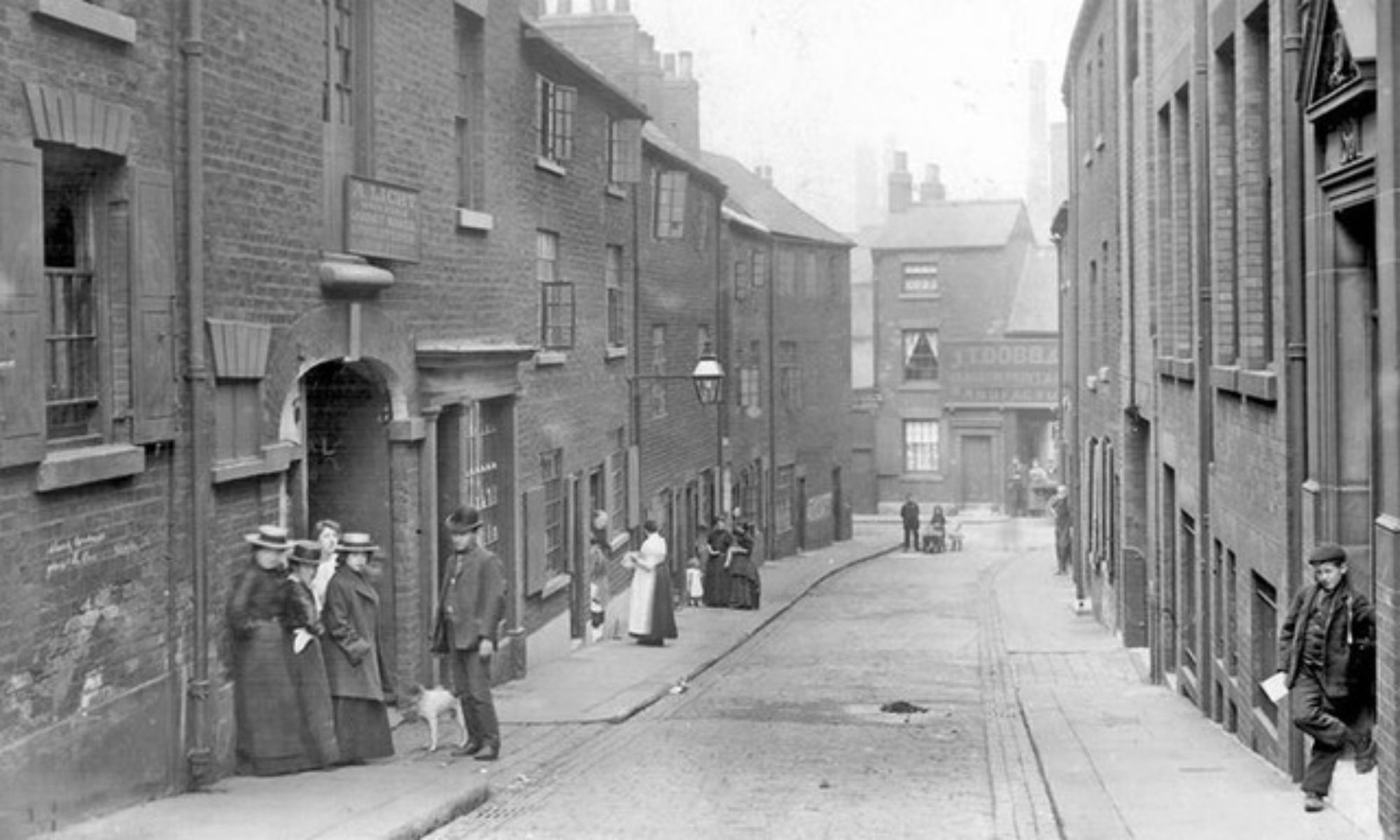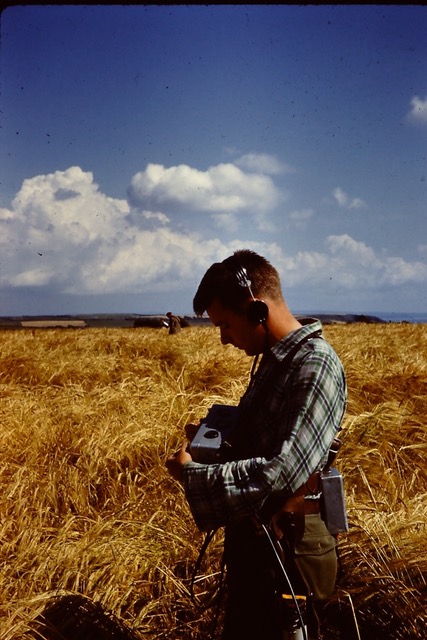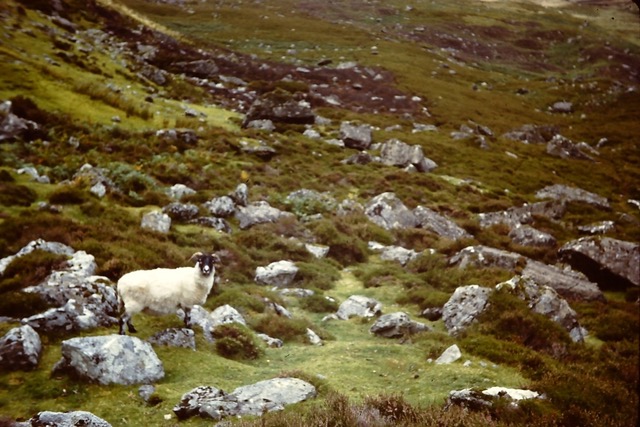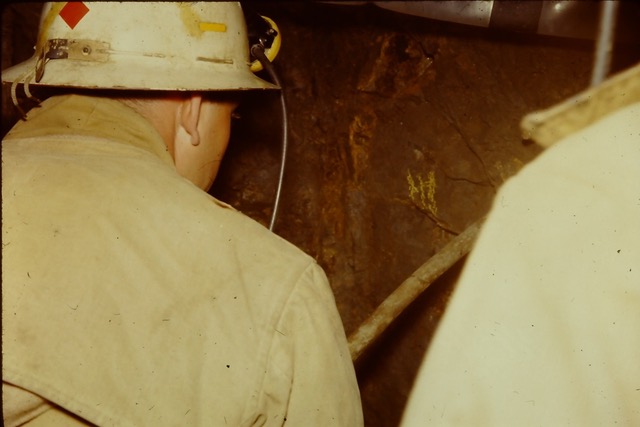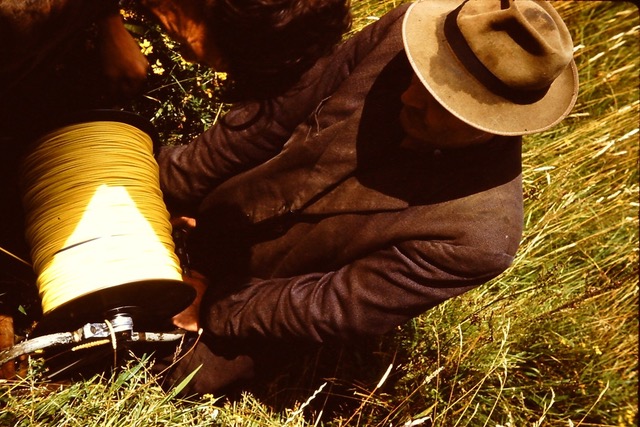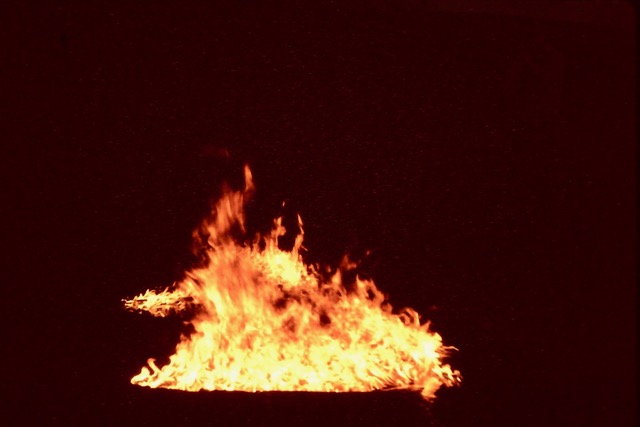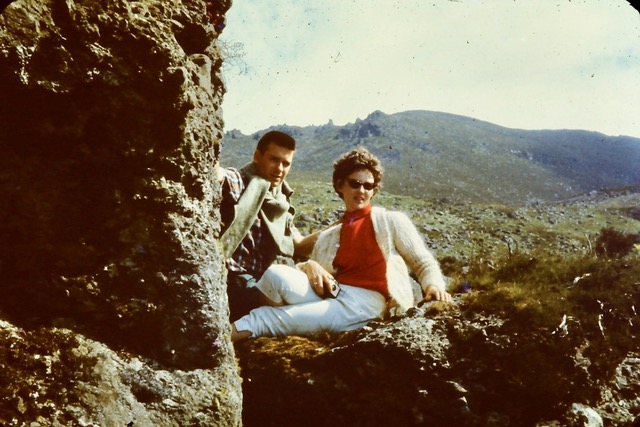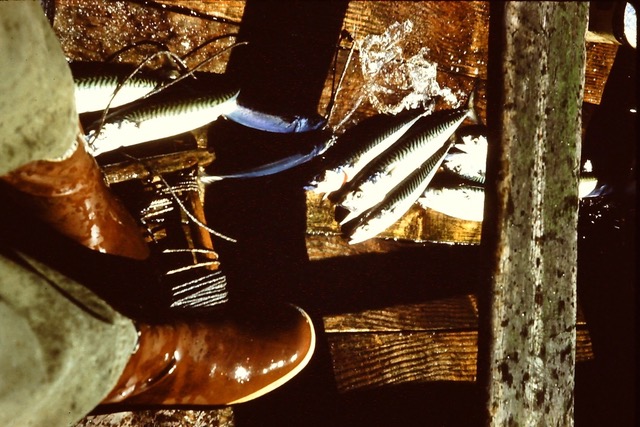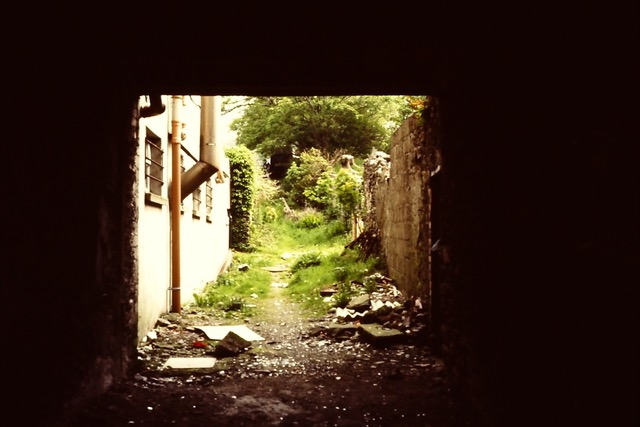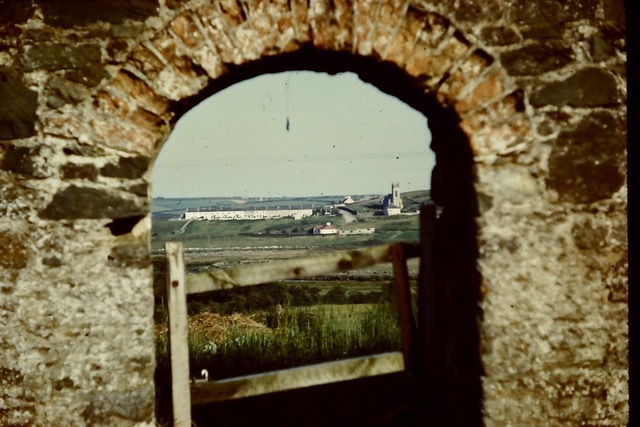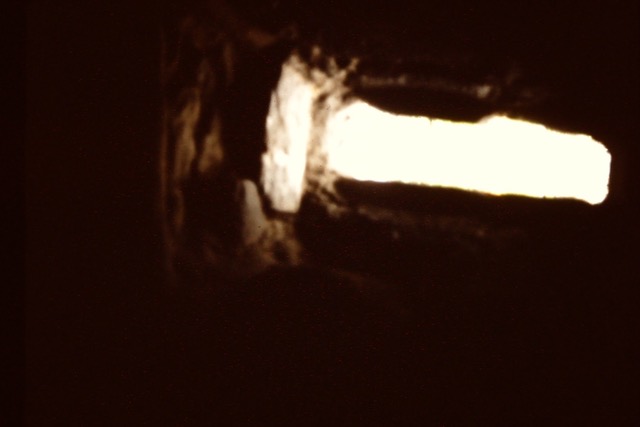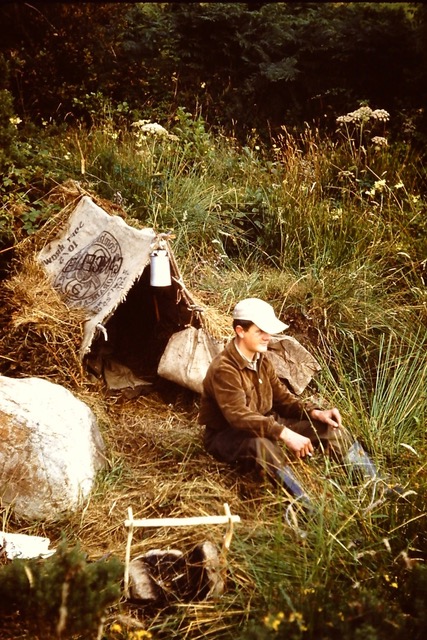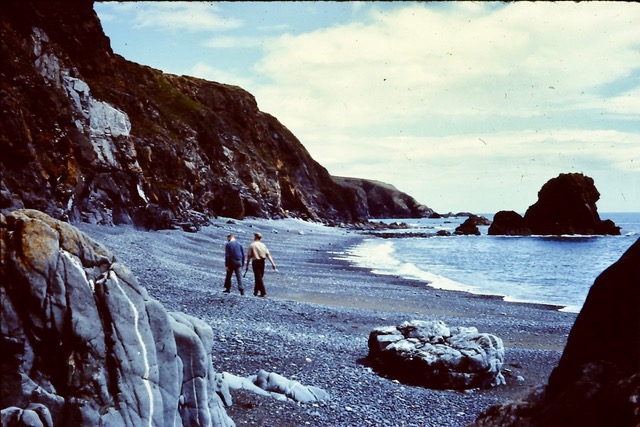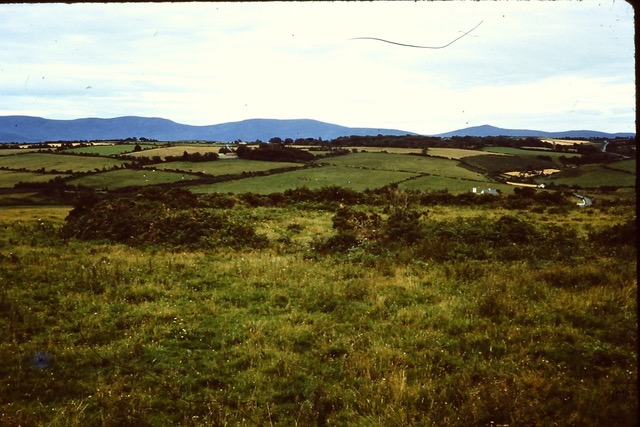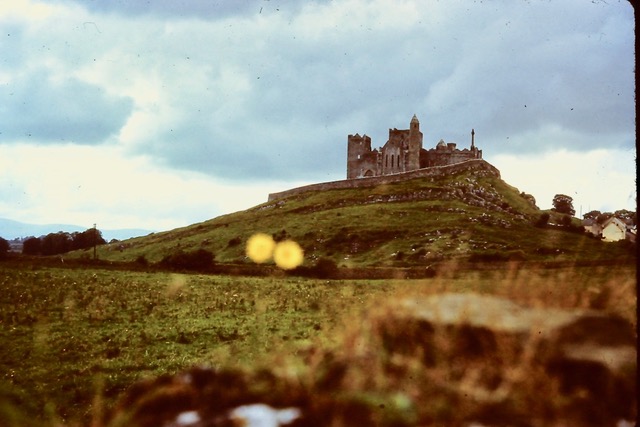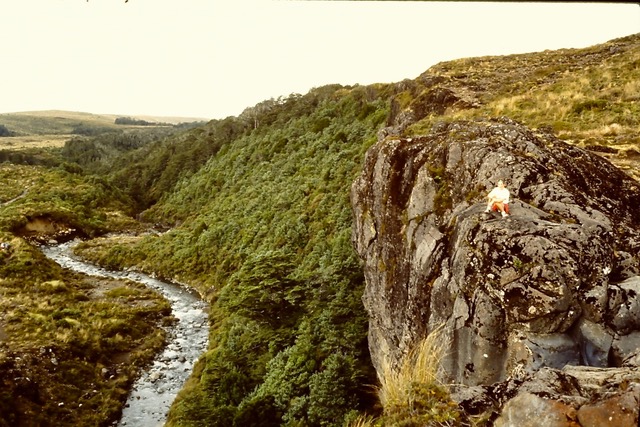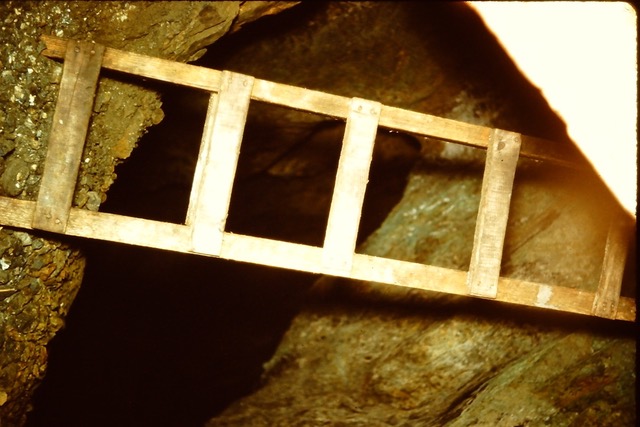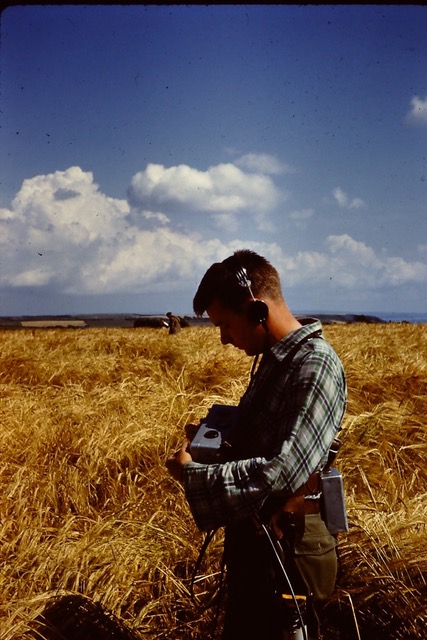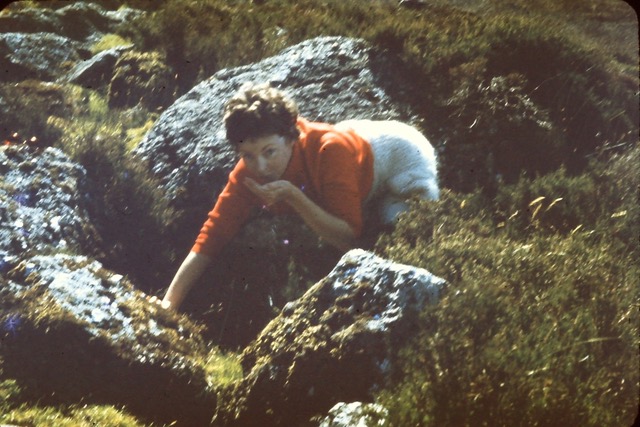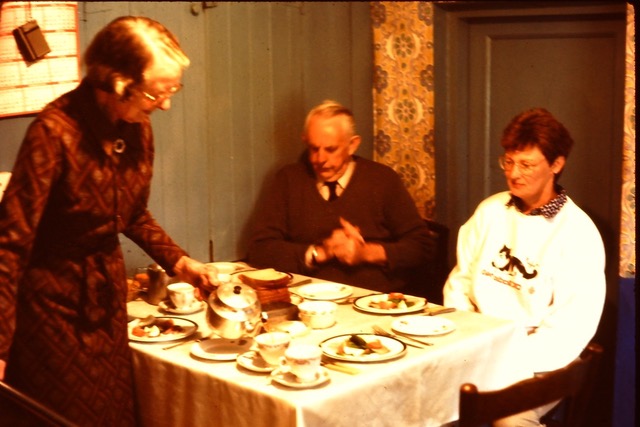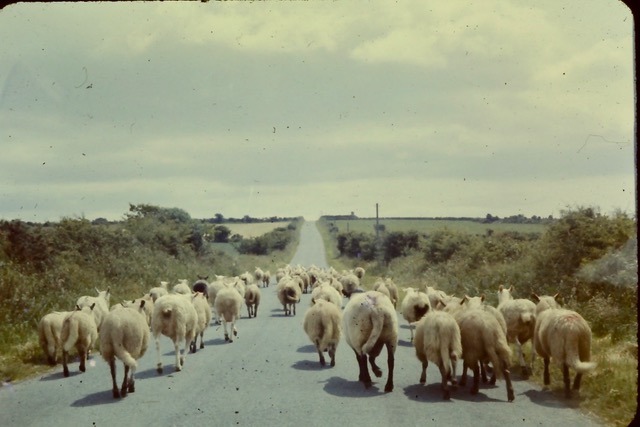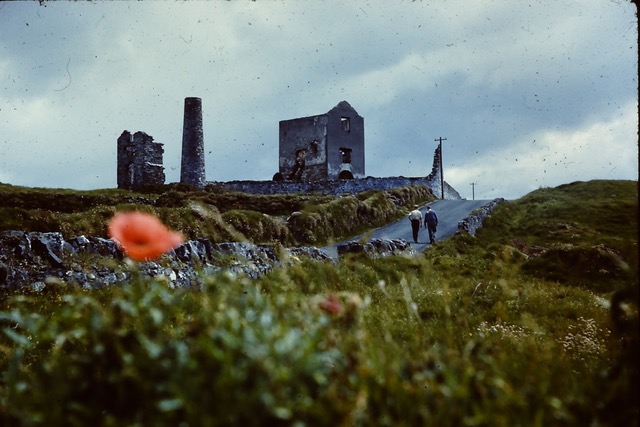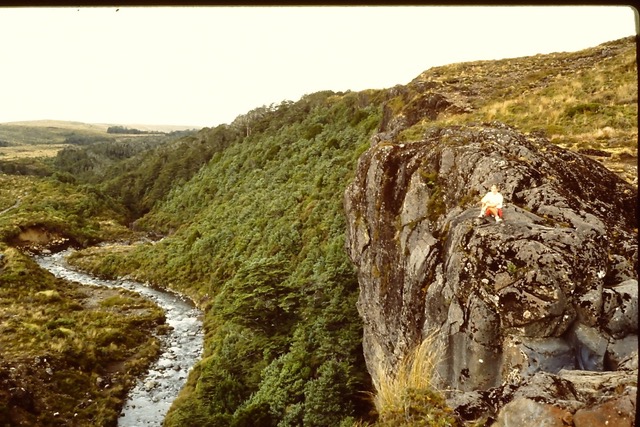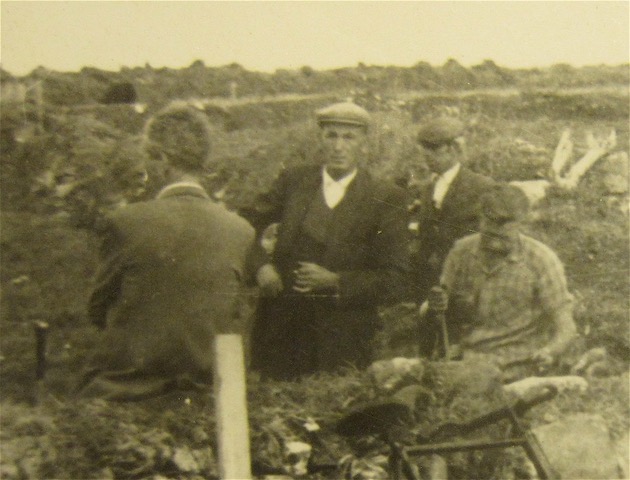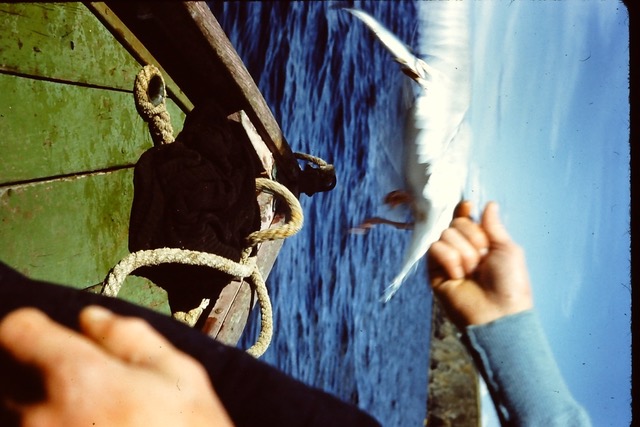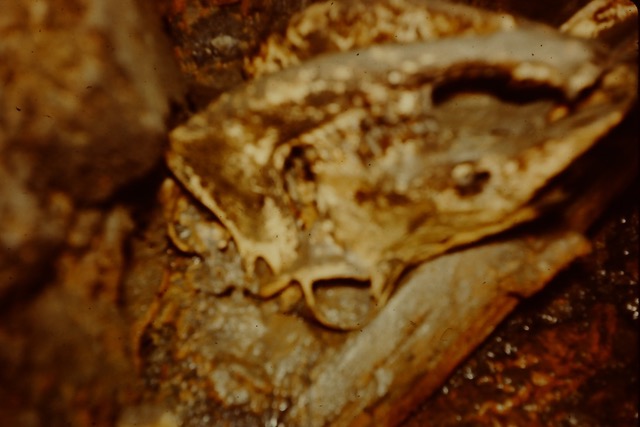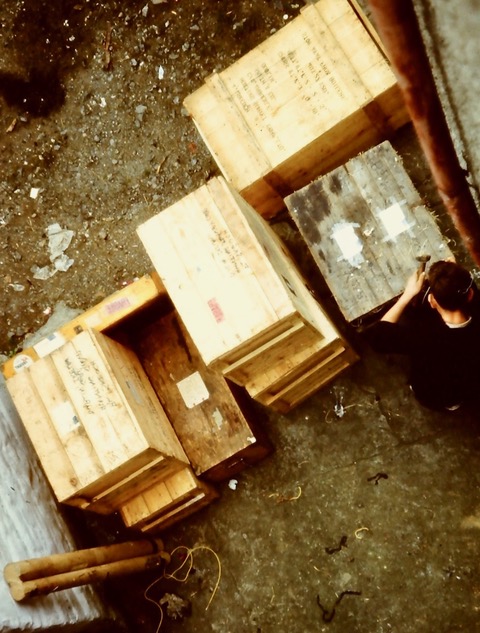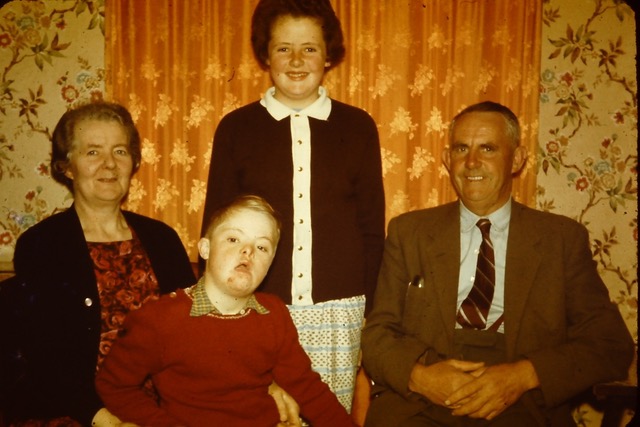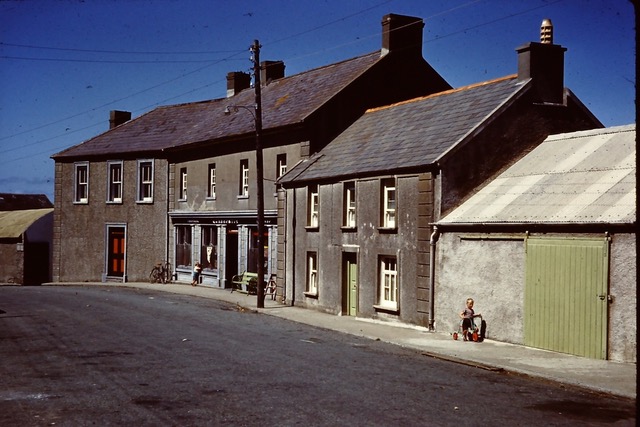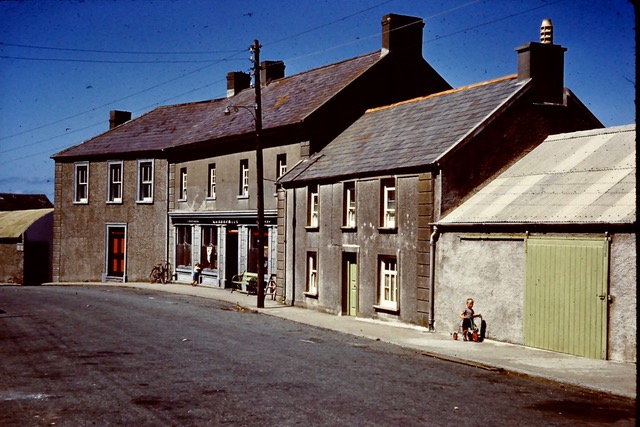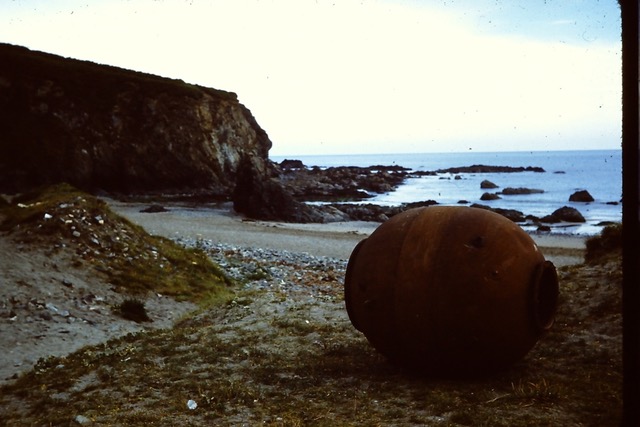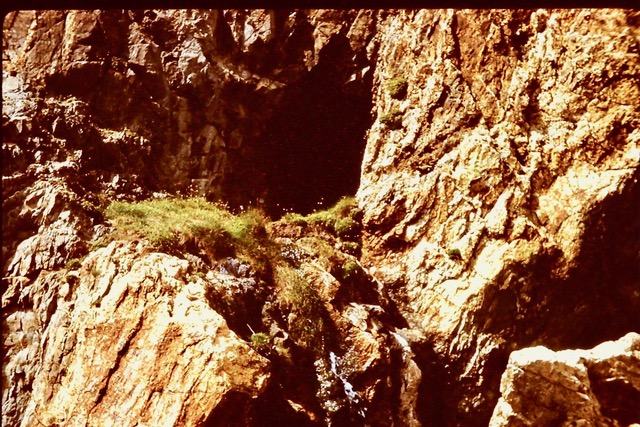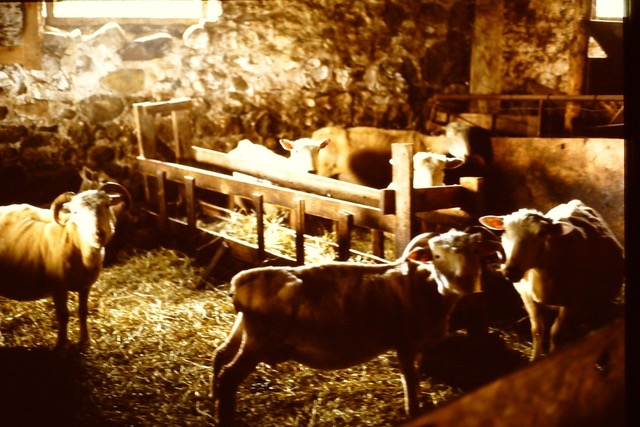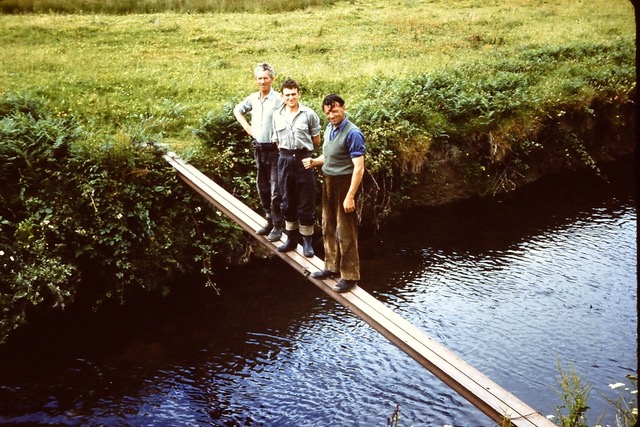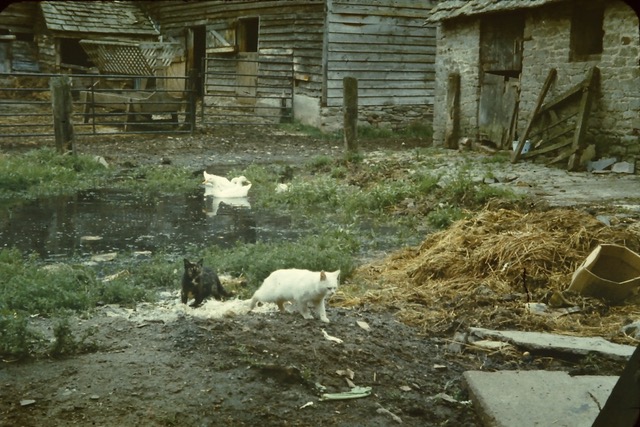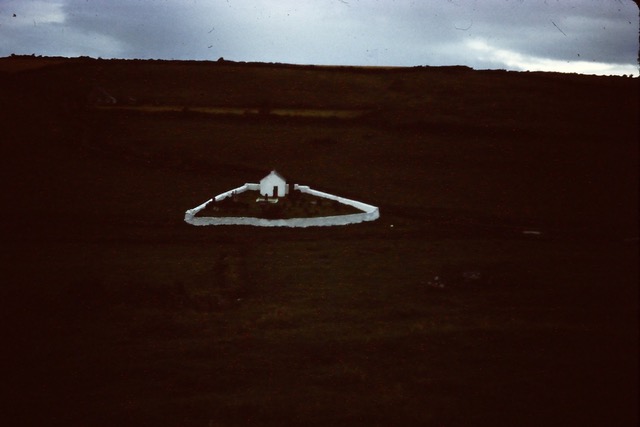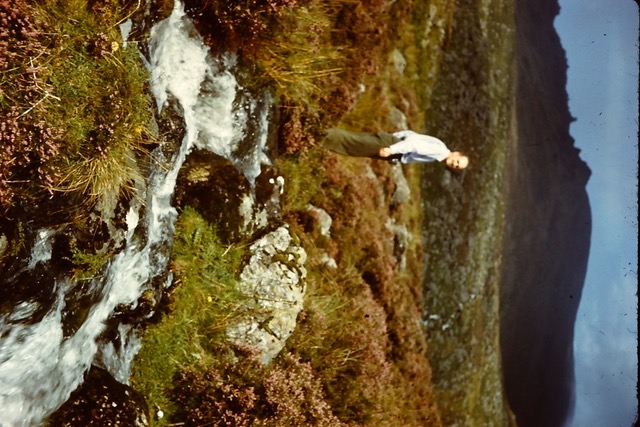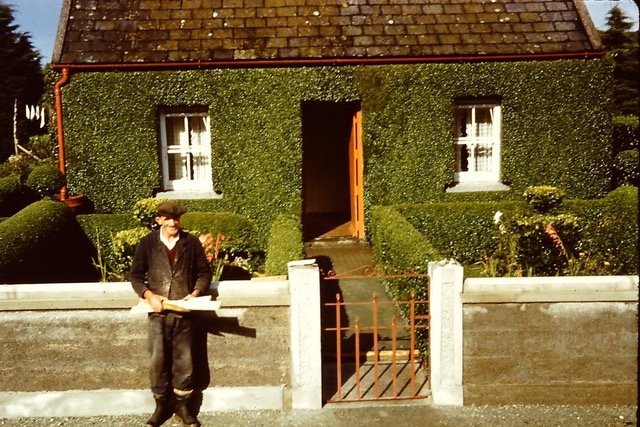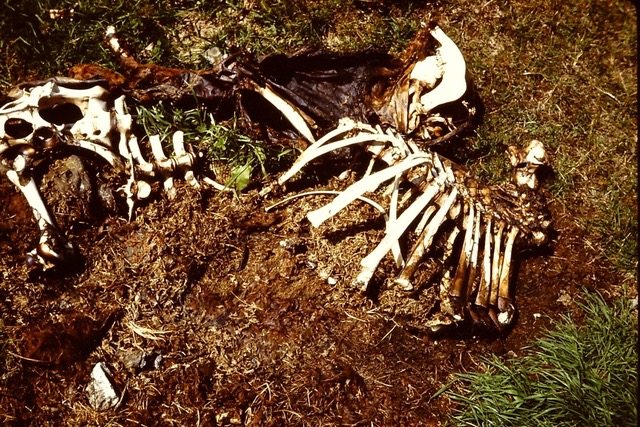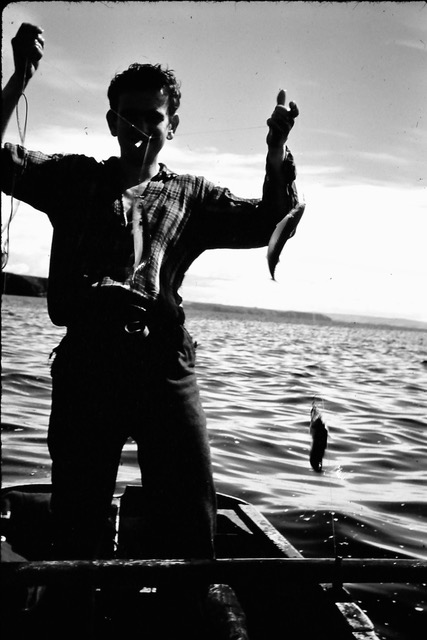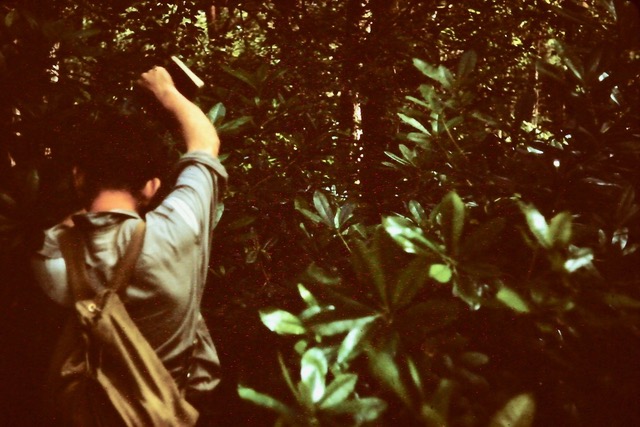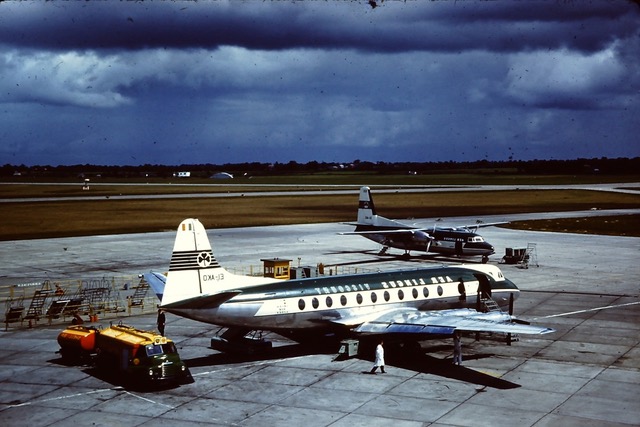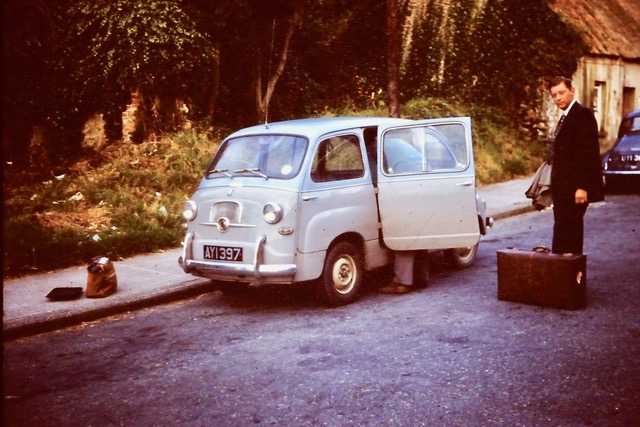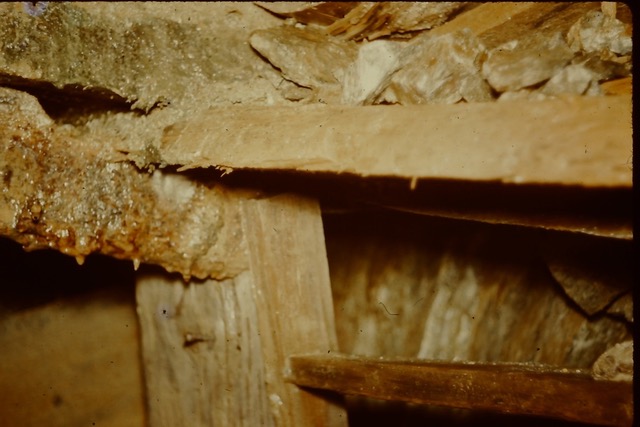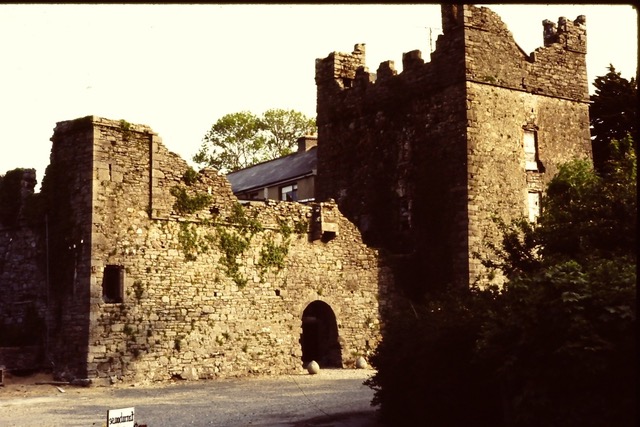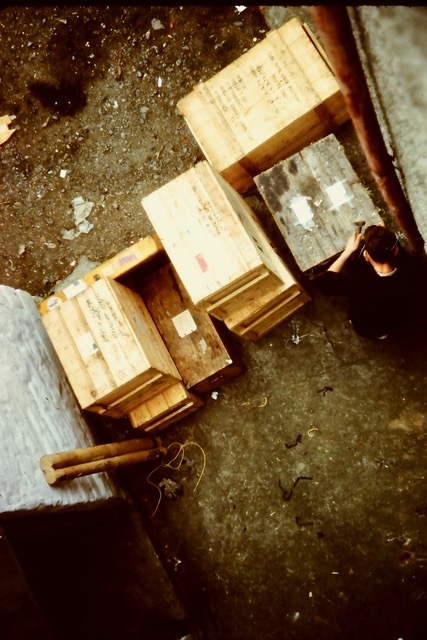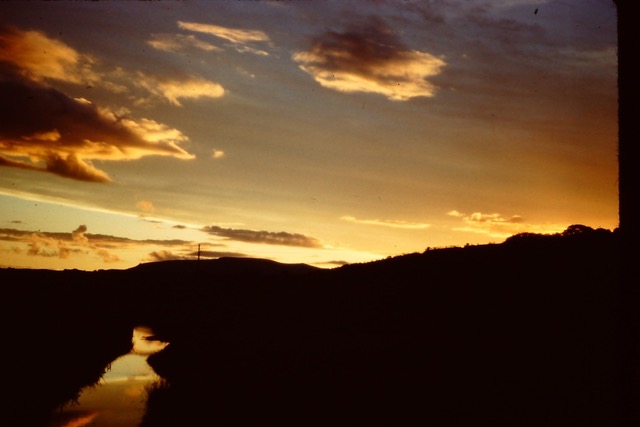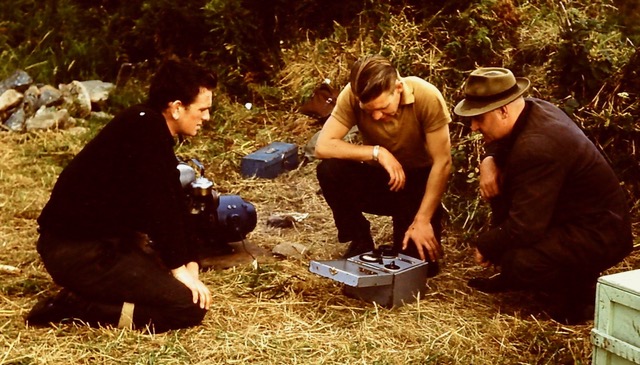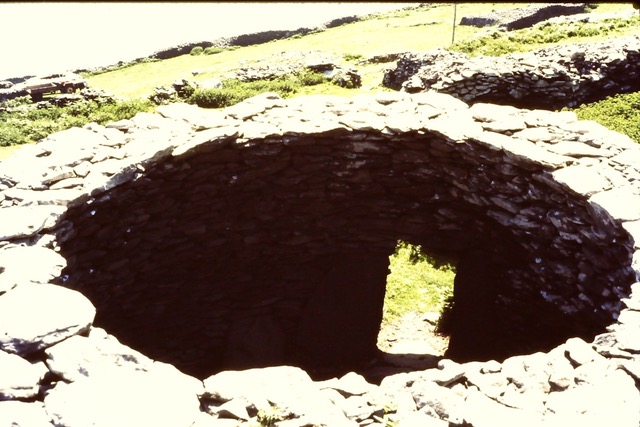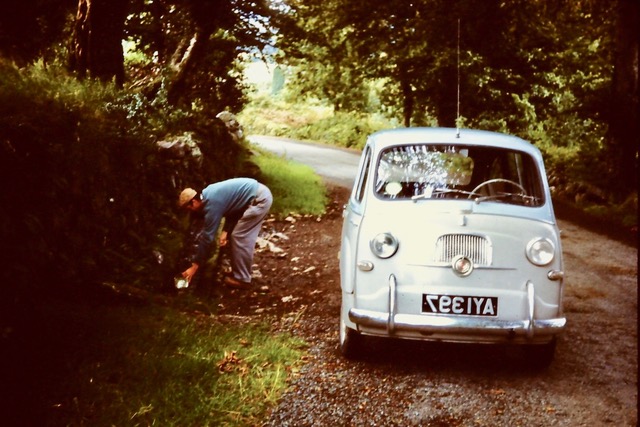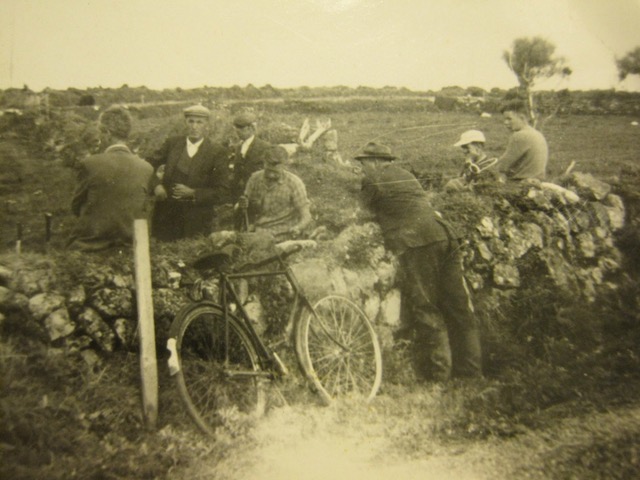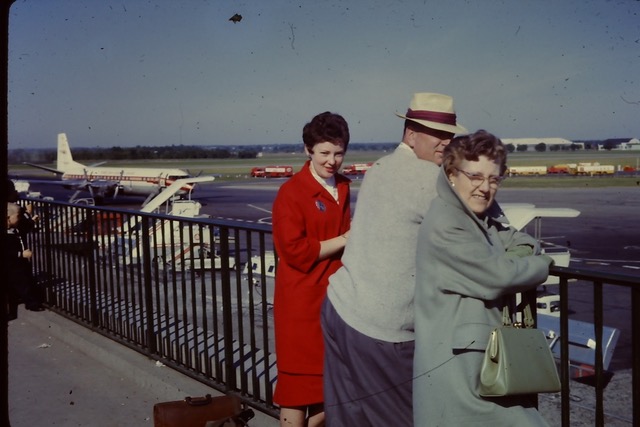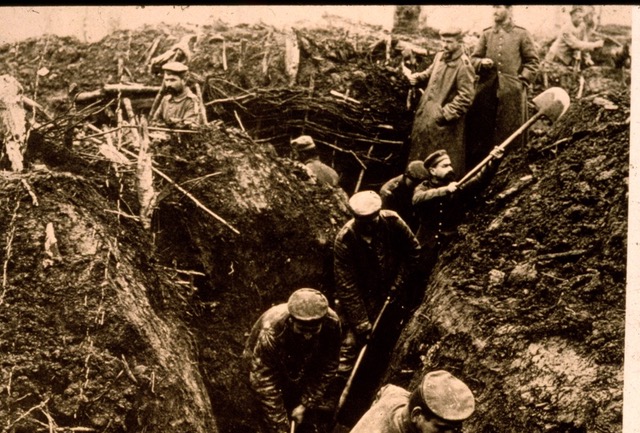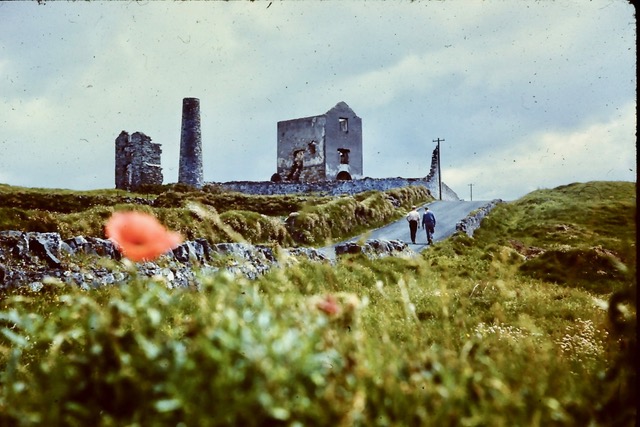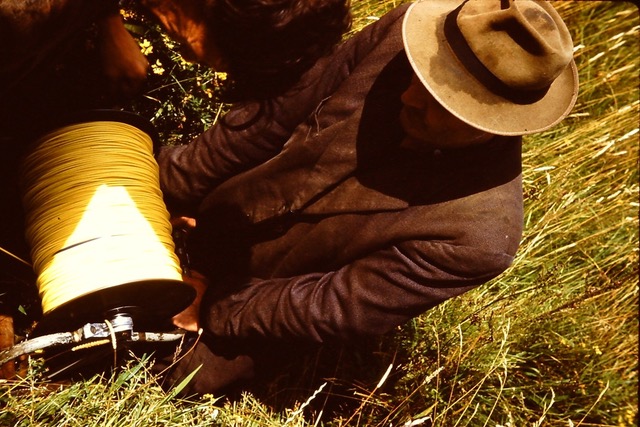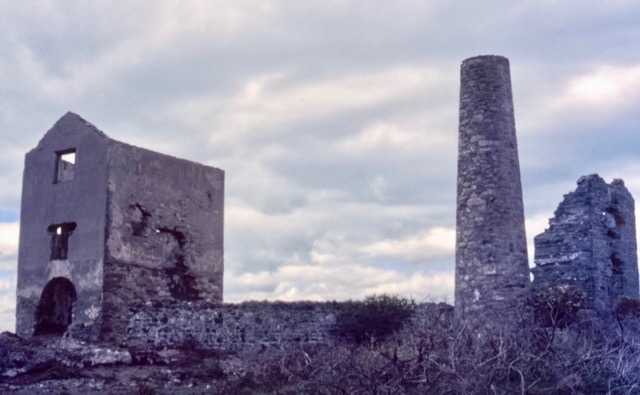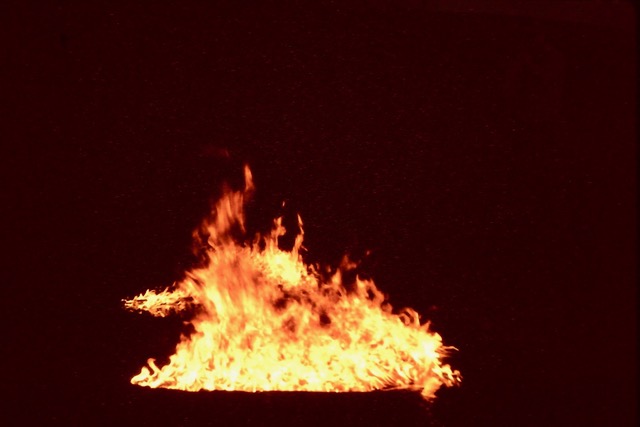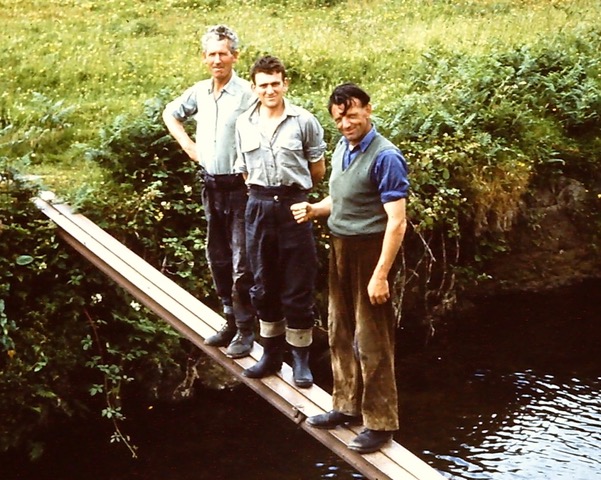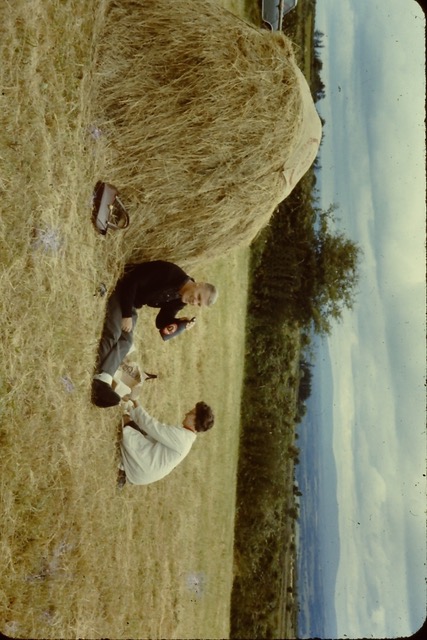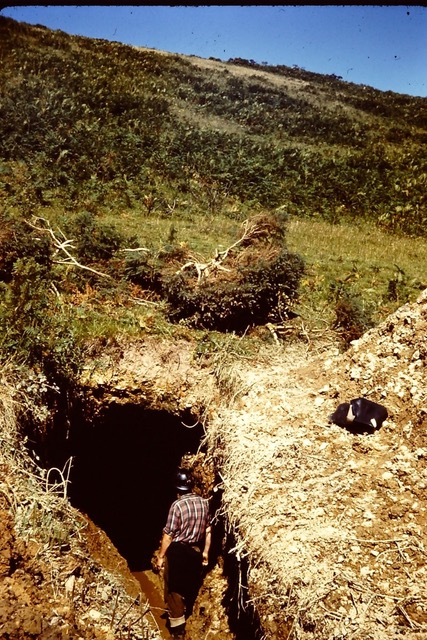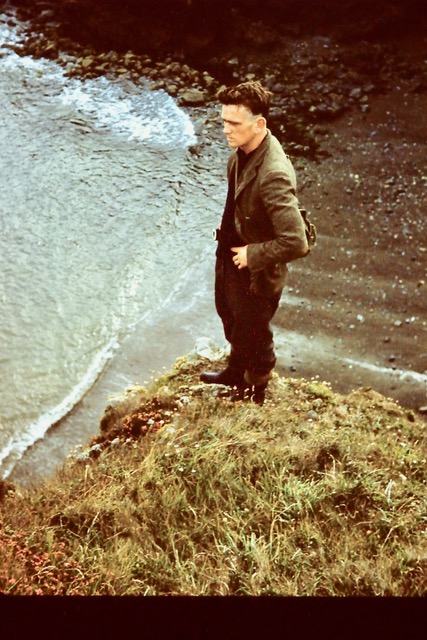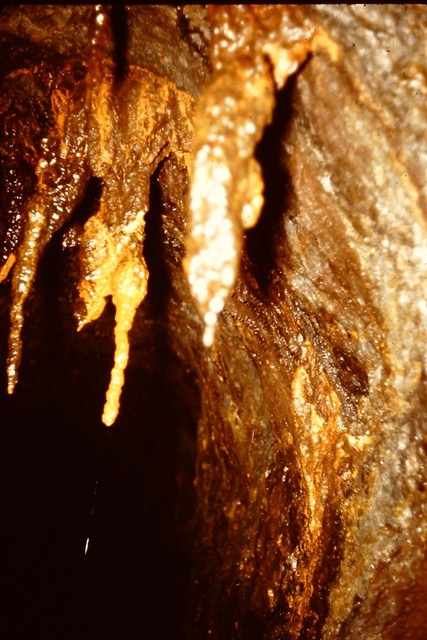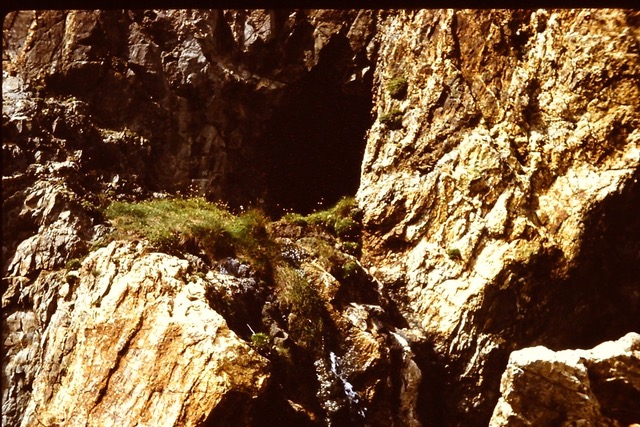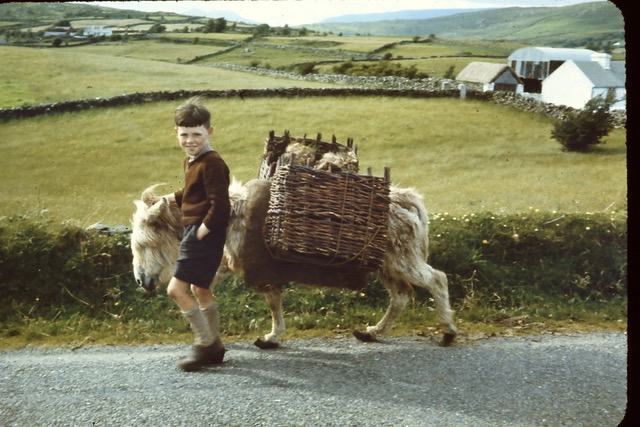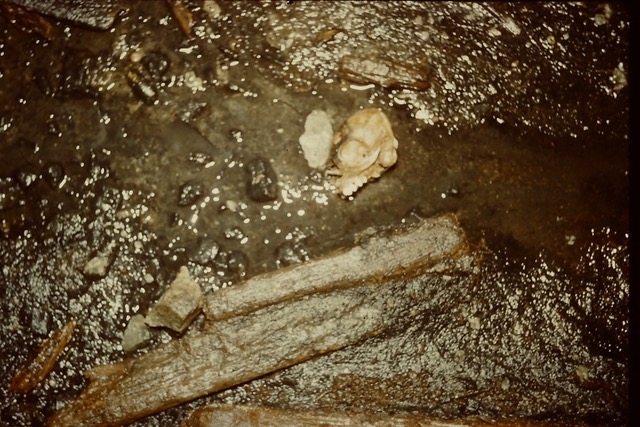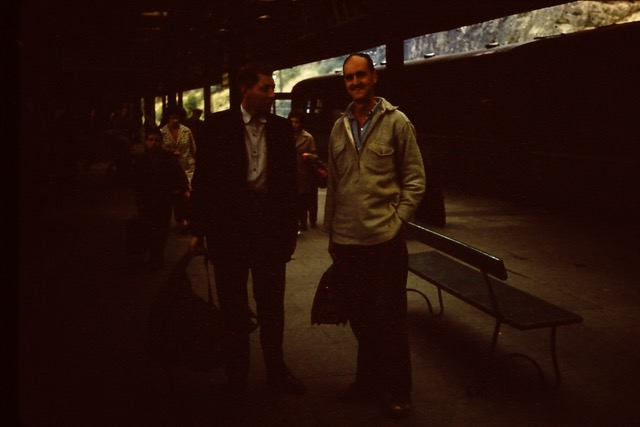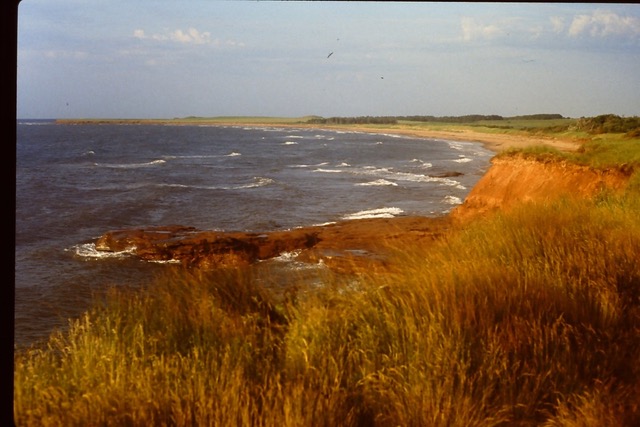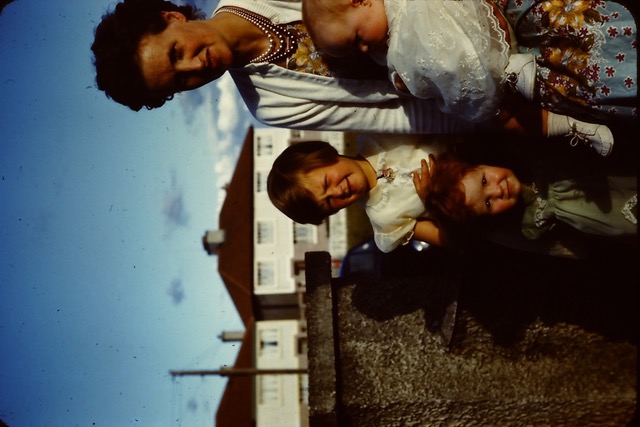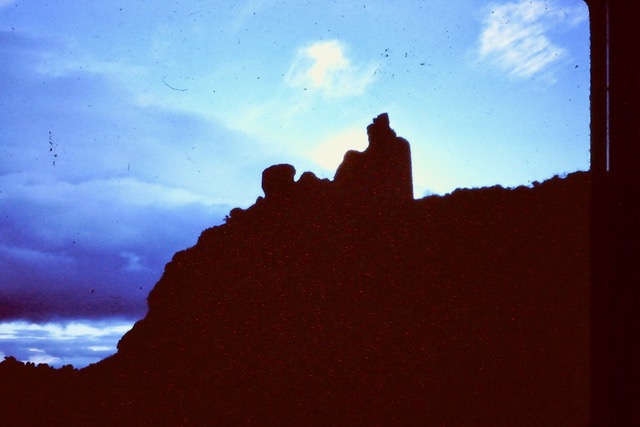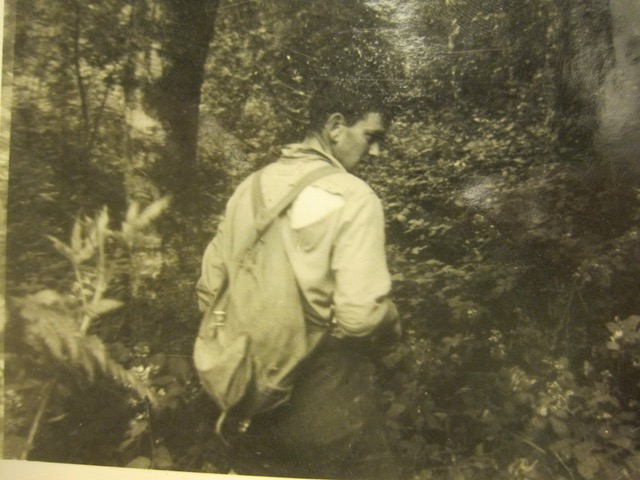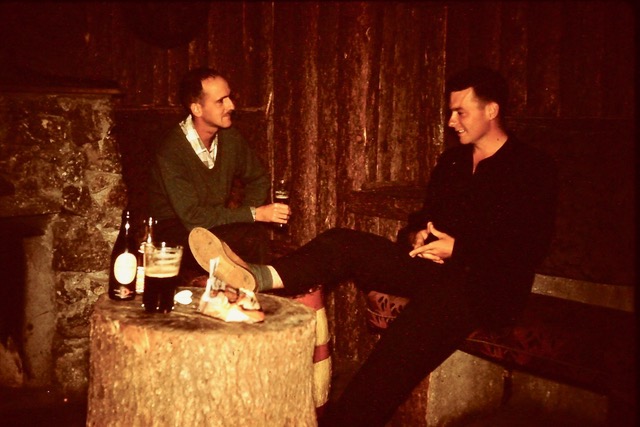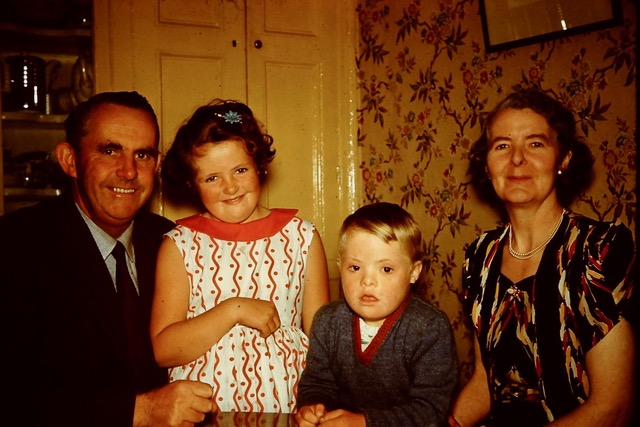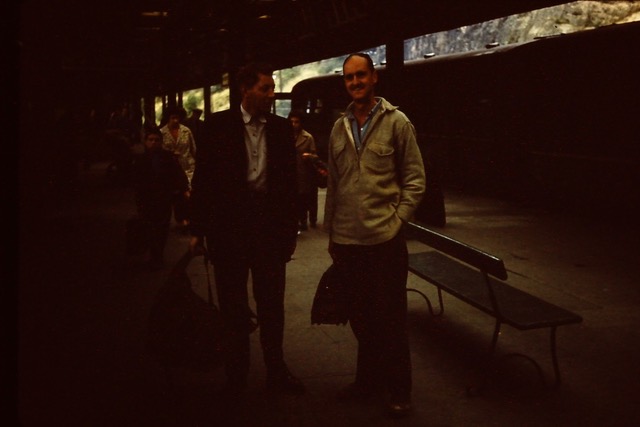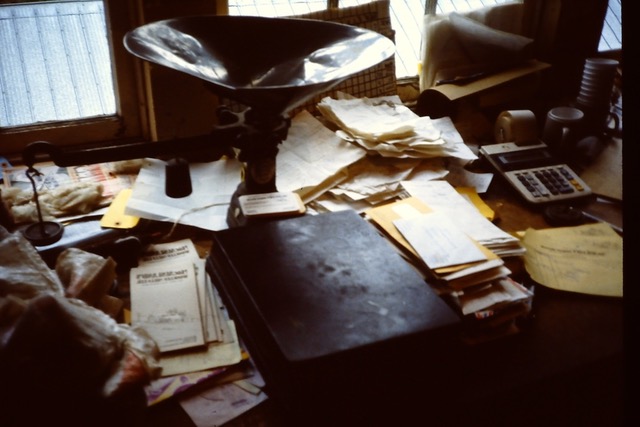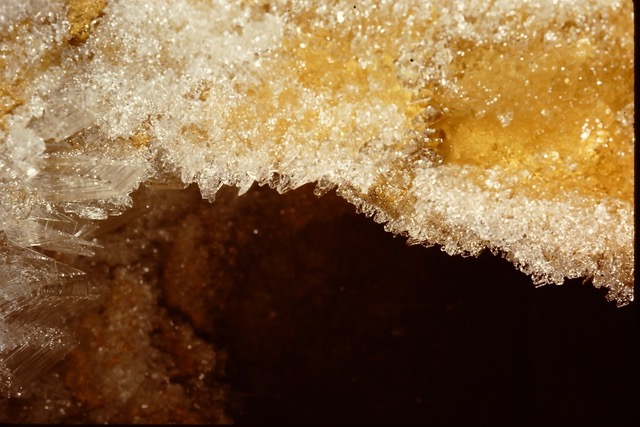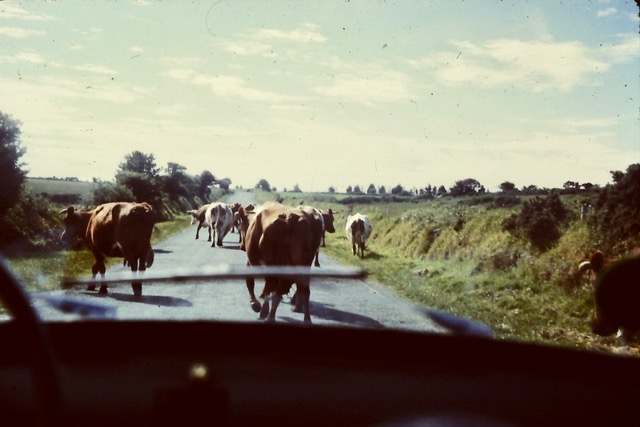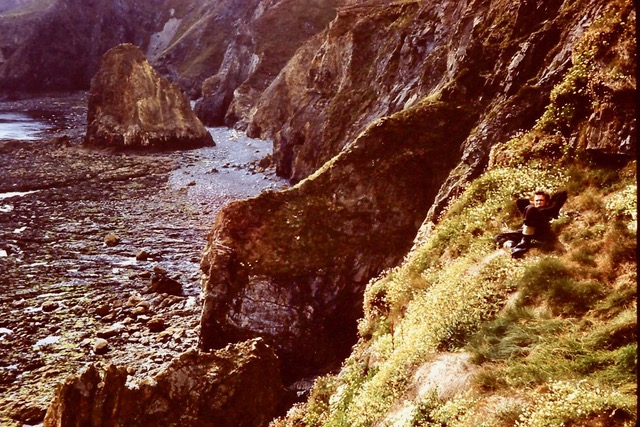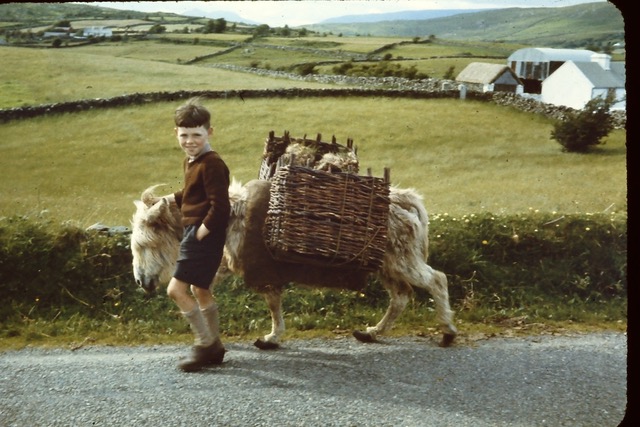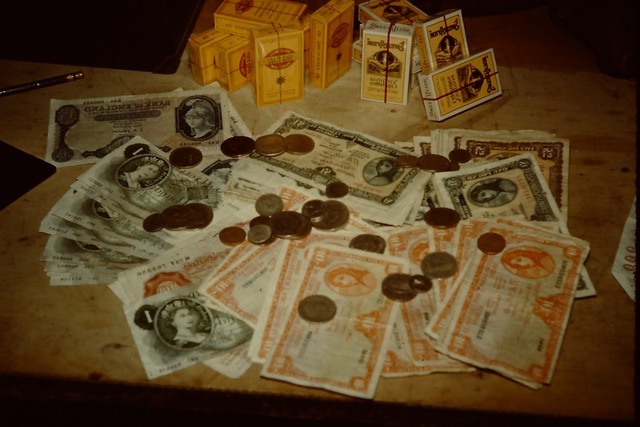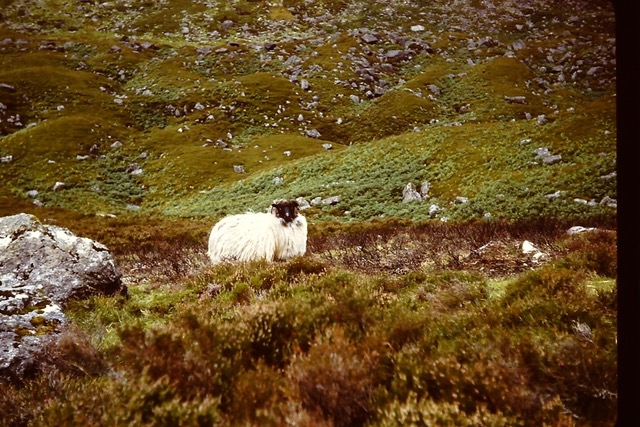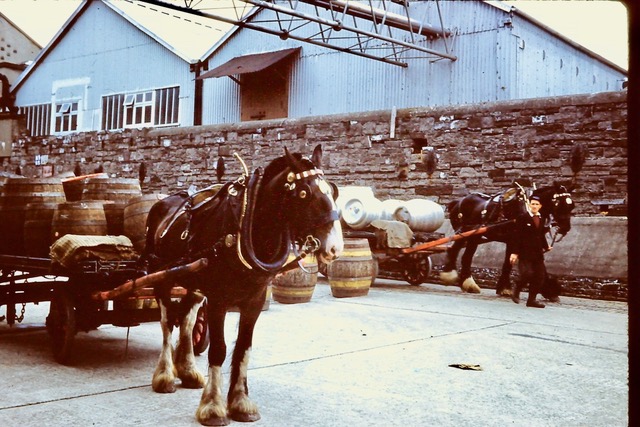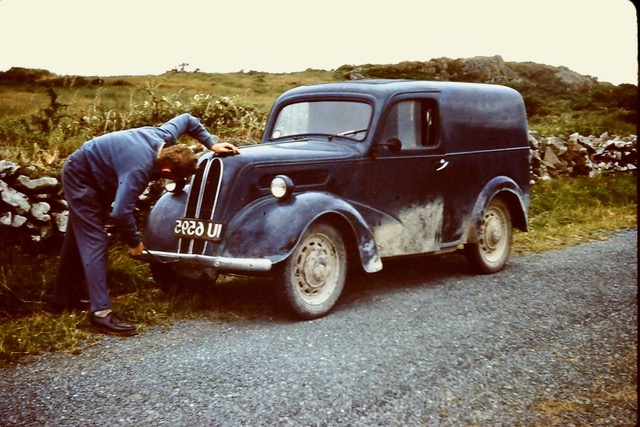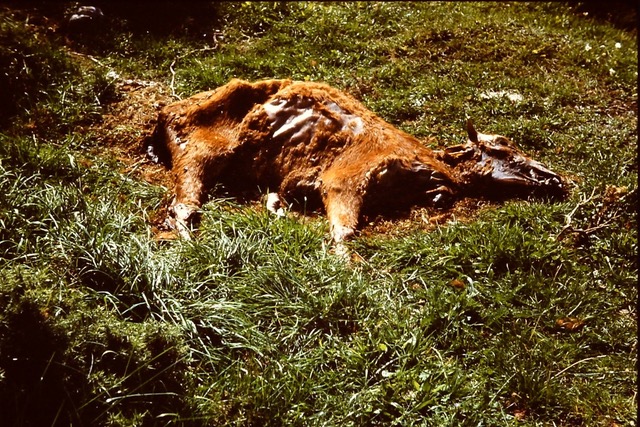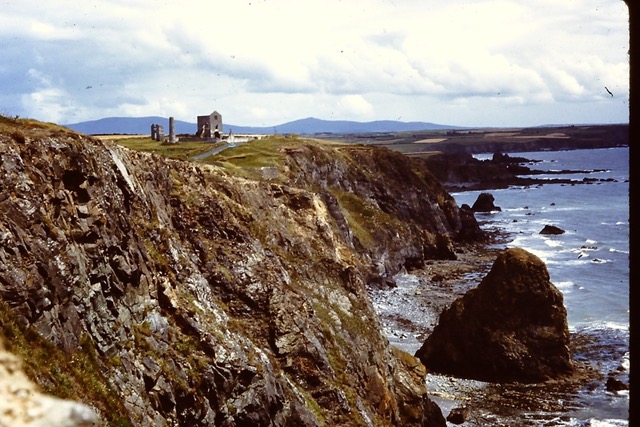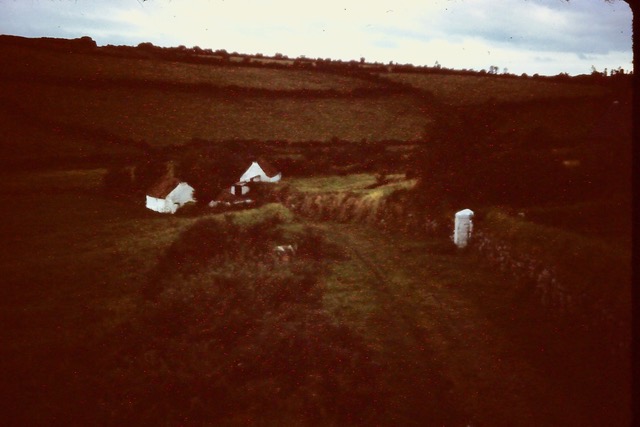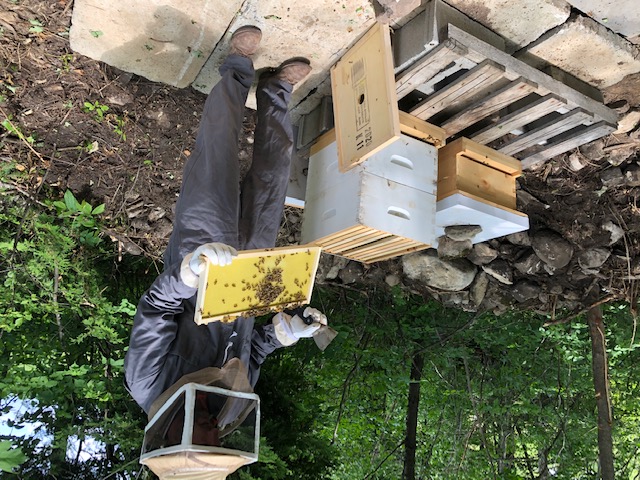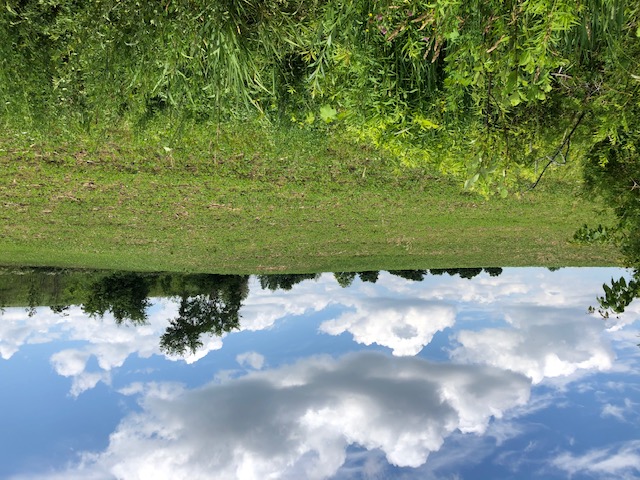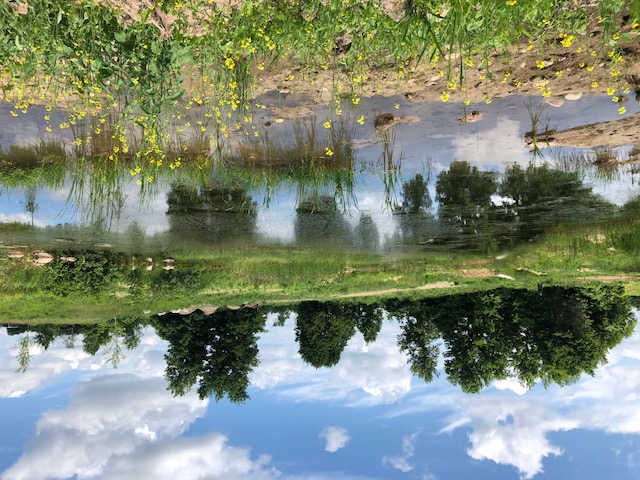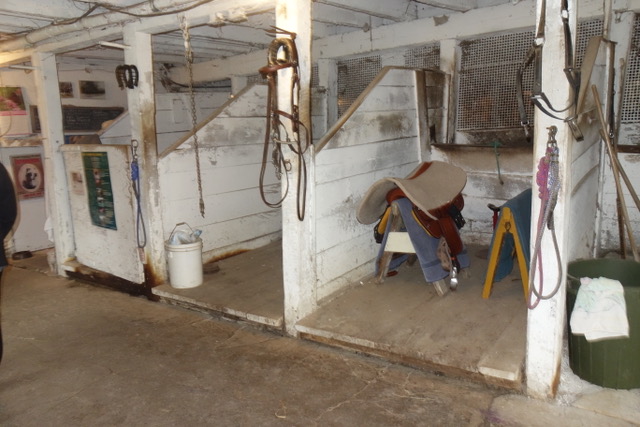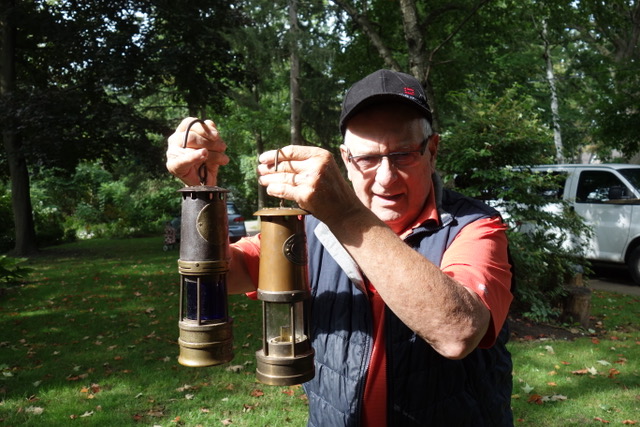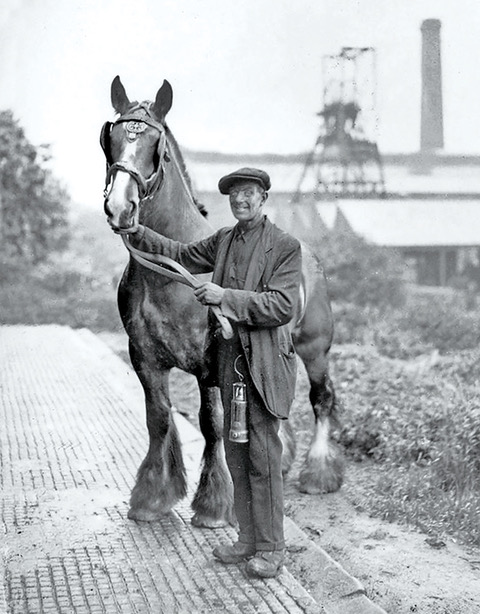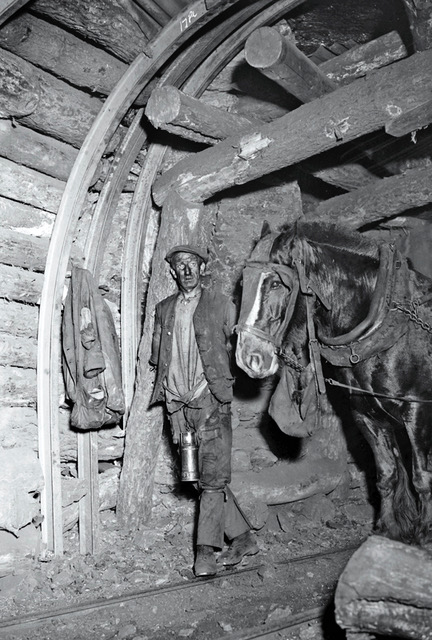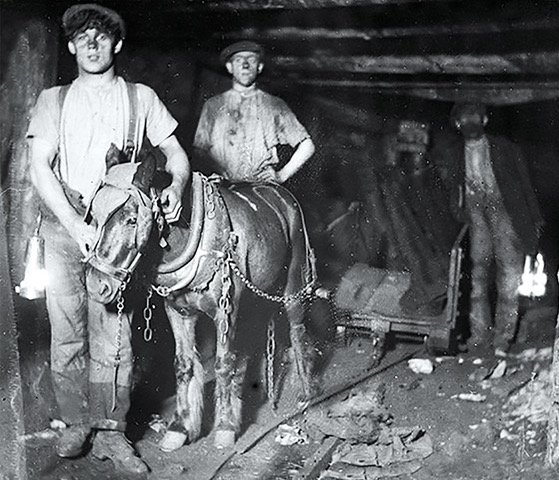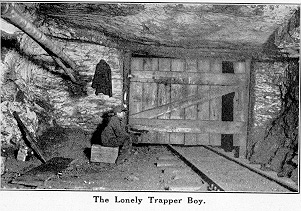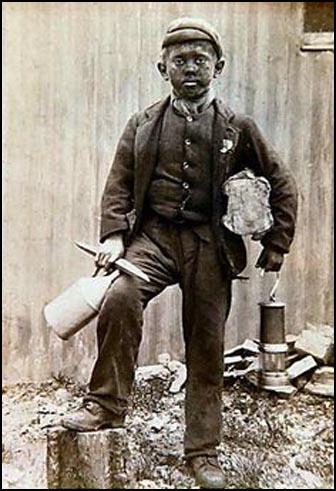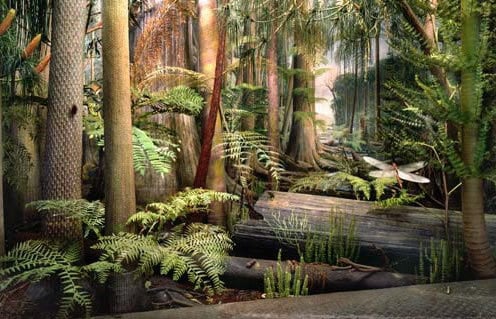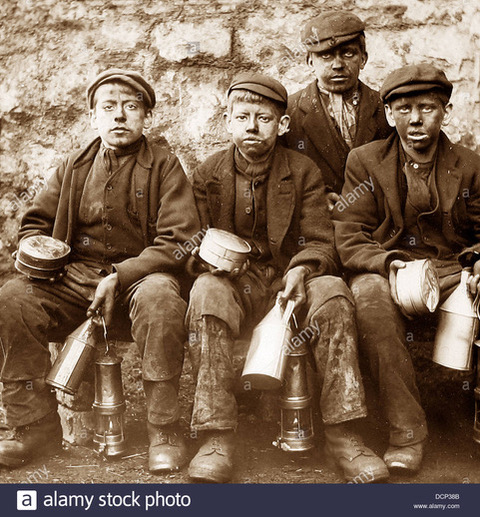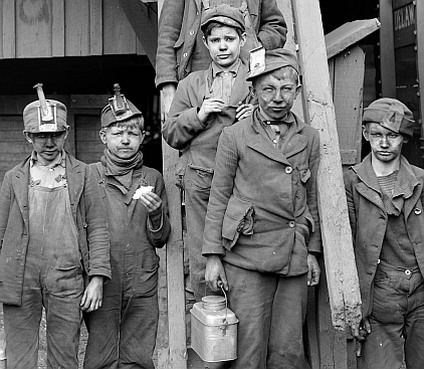special note July 2020
Shortly I will be sending some episodes on the summer of1960 that might help to make the Irish episodes fit better. The language may be a little rough at times because working at the bottom of an abandoned Elliott Lake uranium mine was rough and dangerous as were the men I worked with. Amusing. Informative. True.
Originally I had planned an Episode dealing with mining Cages…and lack of cages as in Knockmahon. That story will come as well.
The surprising note I received from Dan Dwan whose family still lives in Knockmahon and who knows the men who were part of my 1960 team has kindled my imagination. You will find the stories interesting as well I hope.
We are still in lockdown..isolation due to Covid 19 so my captive audience…you…may need the relief of the stories Things could be worse. You could be down 2,000 feet in a uranium mine where the count was 292 …high radiation. Or, as my assistant Harry expressed it….”What the fuck are we doing down here?”
alan
HOW TO BUILD A GARDEN THAT REALLY PRODUCES FOOD…RUBBER TIRES AND BLACK PLASTIC SHEETING
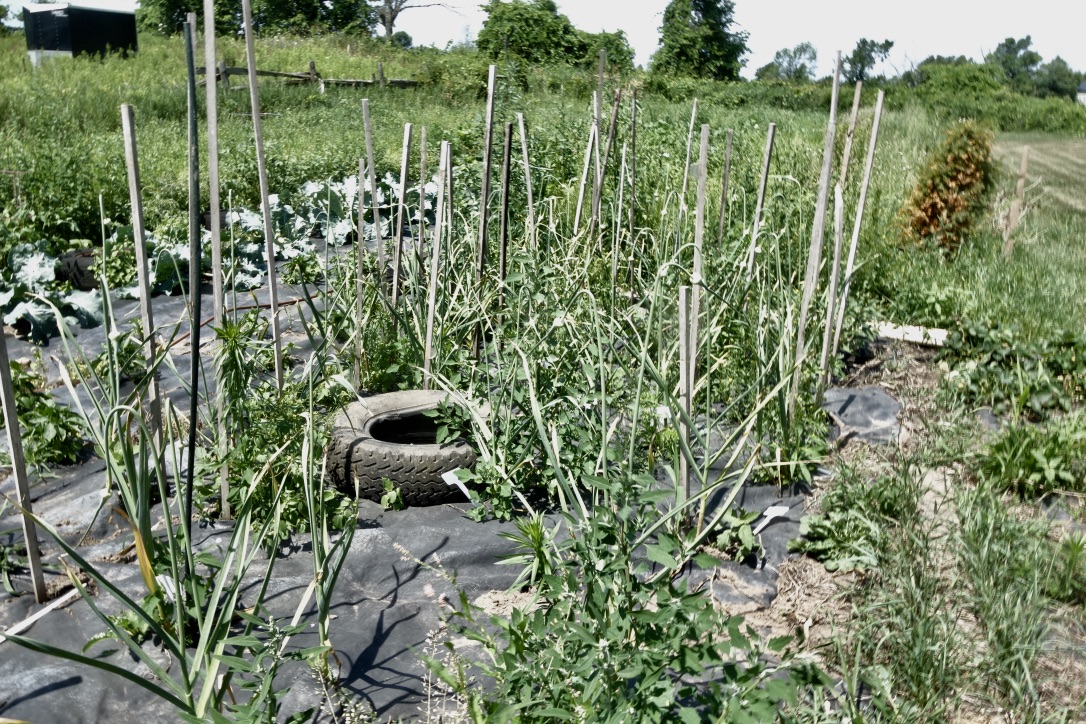
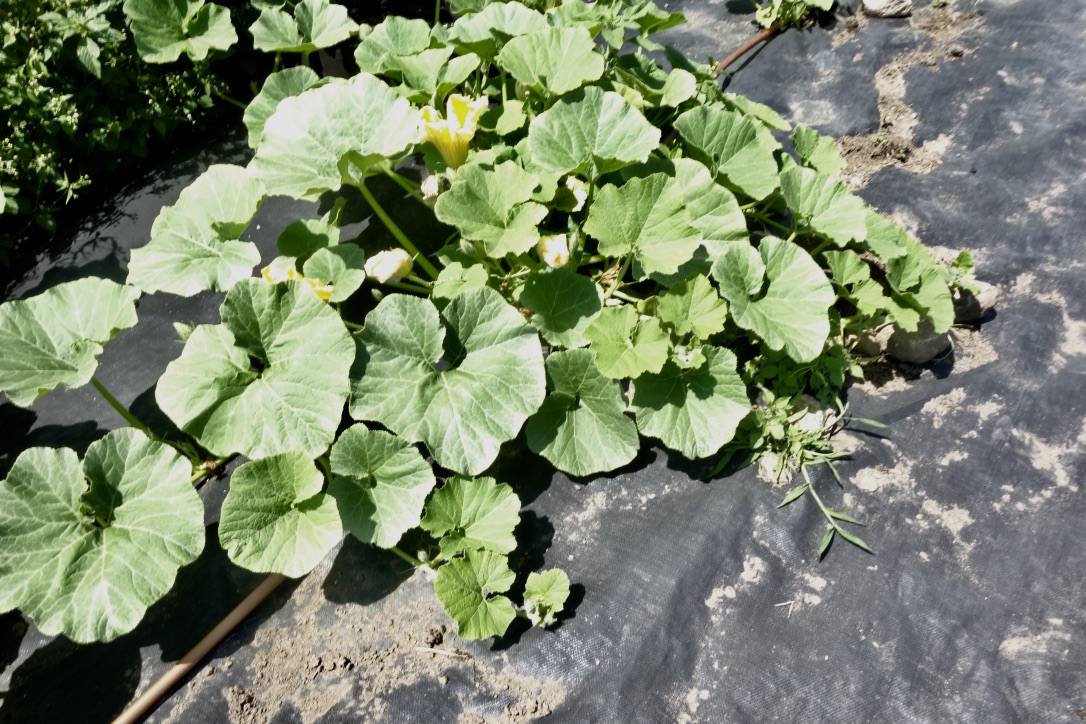

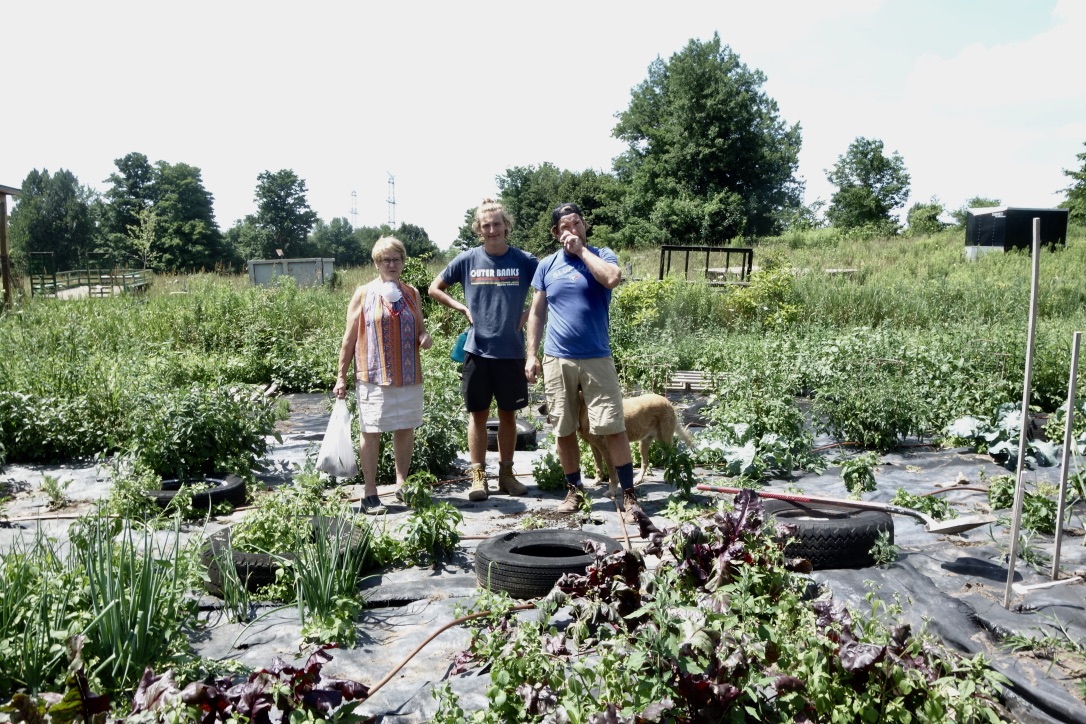

EPISODE 83: AT TALE OF TWO GARDENS IN PANDEMIC YEAR…CITY GARDEN AND COUNTRY GARDEN JULY 15, 2020








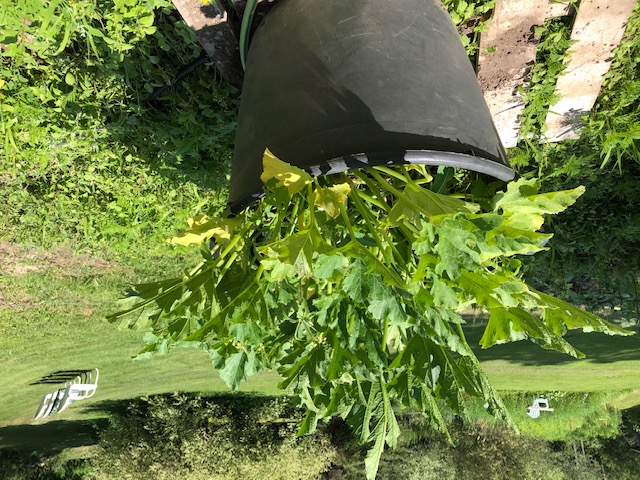

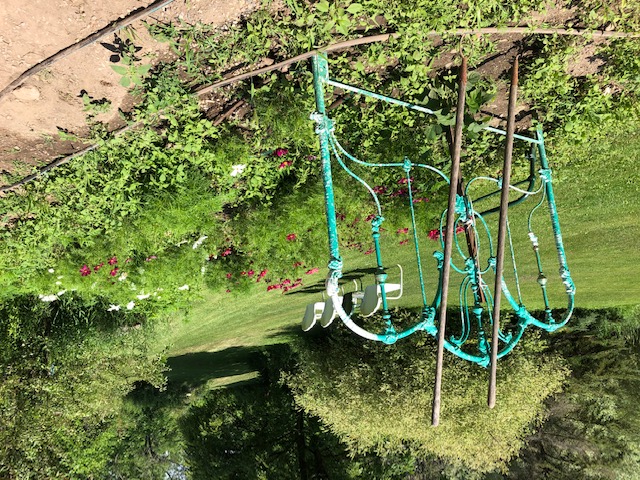
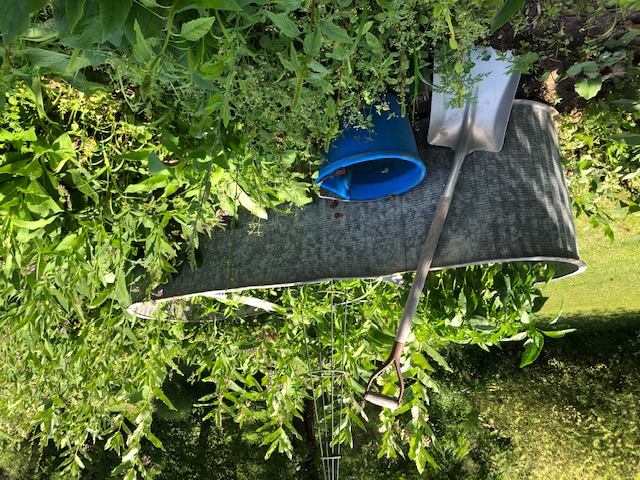
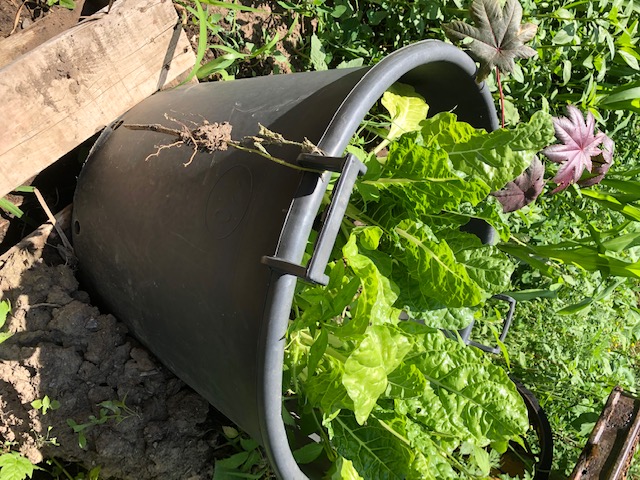



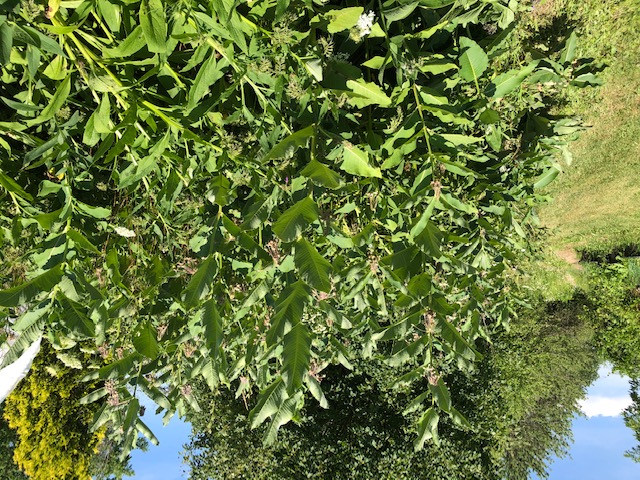
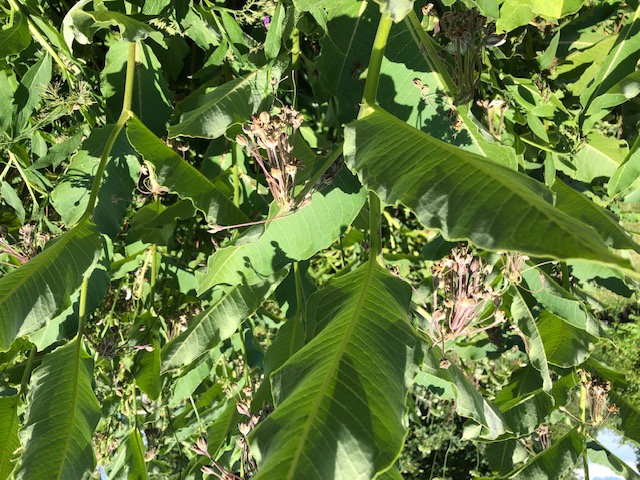


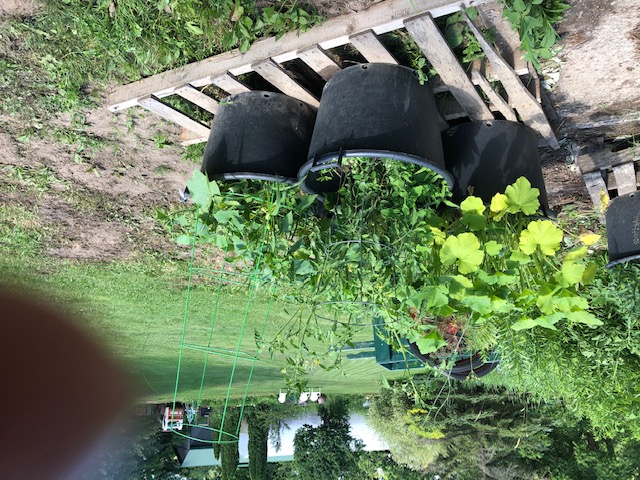


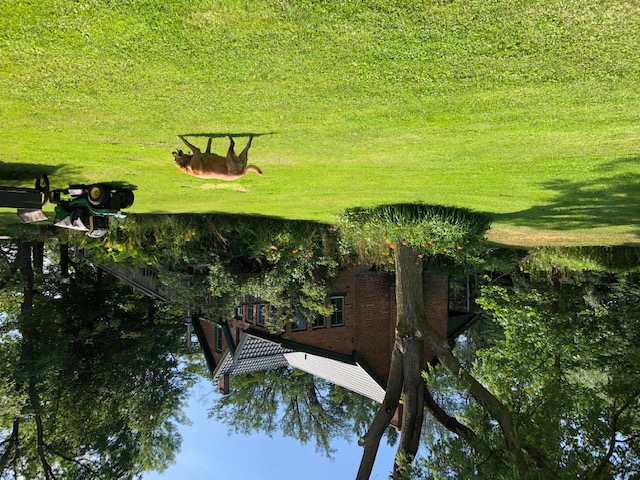


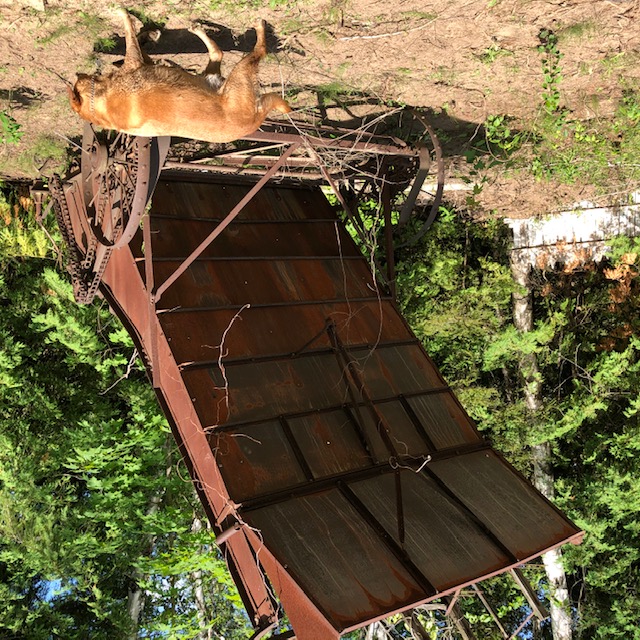







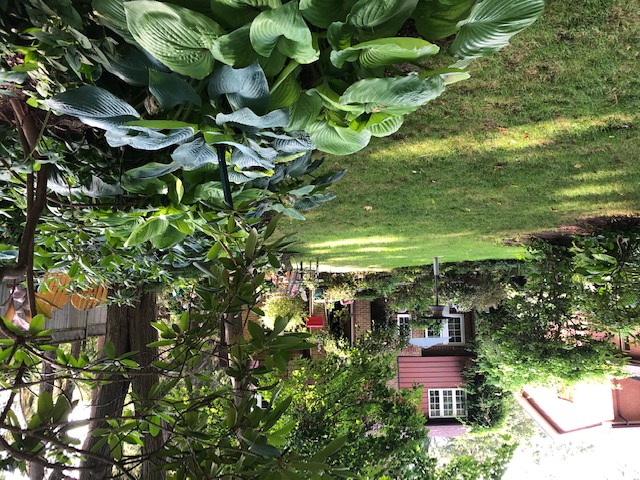




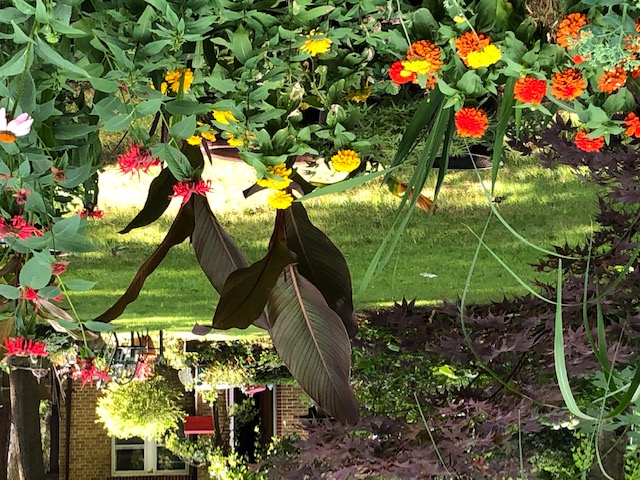



ALAN SKEOCH’
Sent from my iPhone
EPISODE 82 BUNMAHON 1960 … A STARTLING LETTER RECIEVED JULY 16, 2020
EPISODE 82: Bees
Begin forwarded message:
From: ALAN SKEOCH <alan.skeoch@rogers.com>Subject: BeesDate: July 3, 2020 at 9:48:16 PM EDTTo: Alan Skeoch <alan.skeoch@rogers.com>
BEES AND BEEKEEPING…AND THOSE CLOUDS
alan skeoch
“What a great day for dreaming…;puts
me in mind that snippet from John Lennon’s
But I’m not the only one
I hope someday you’ll join us
CLOUDS NEVER GET IN MY WAY
Rows and floes of angel hair
And ice cream castles in the air
And feather canyons everywhere
I’ve looked at clouds that way
Do you want something to do?
Take a load off your feet and see what you can
alan skeoch
July 4, 2020
Sent from my iPhone
EPISODE 80 CANADA DAY…IS CANADA A CREATION OF LUCK OR GOOD SENSE

EPISODE 78 LIVES OF MINERS IN BUNMAHON IRELAND 1840 TO 1875


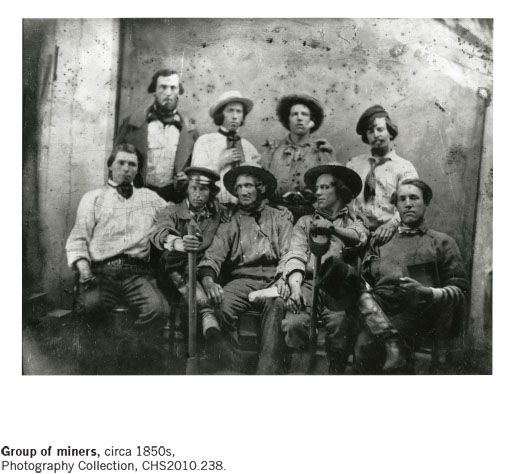



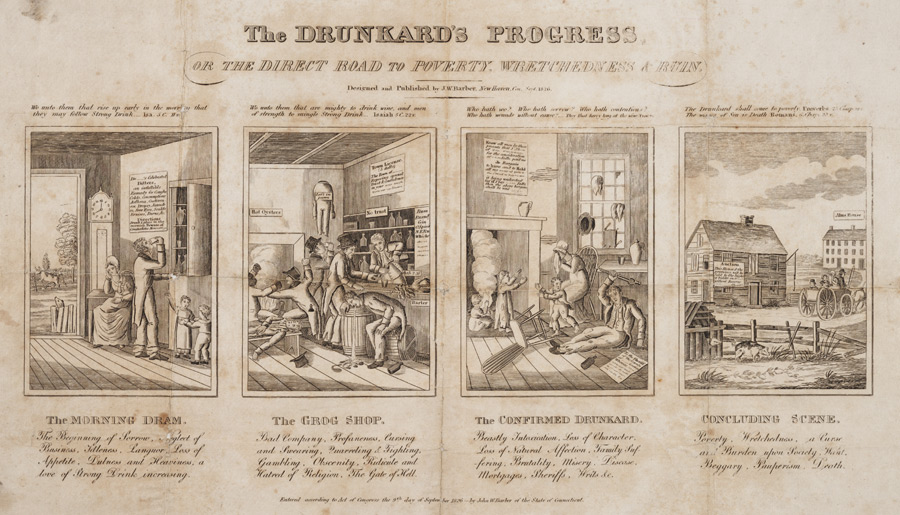
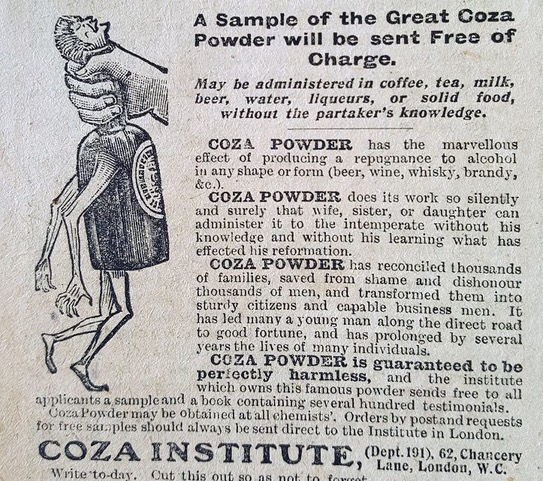
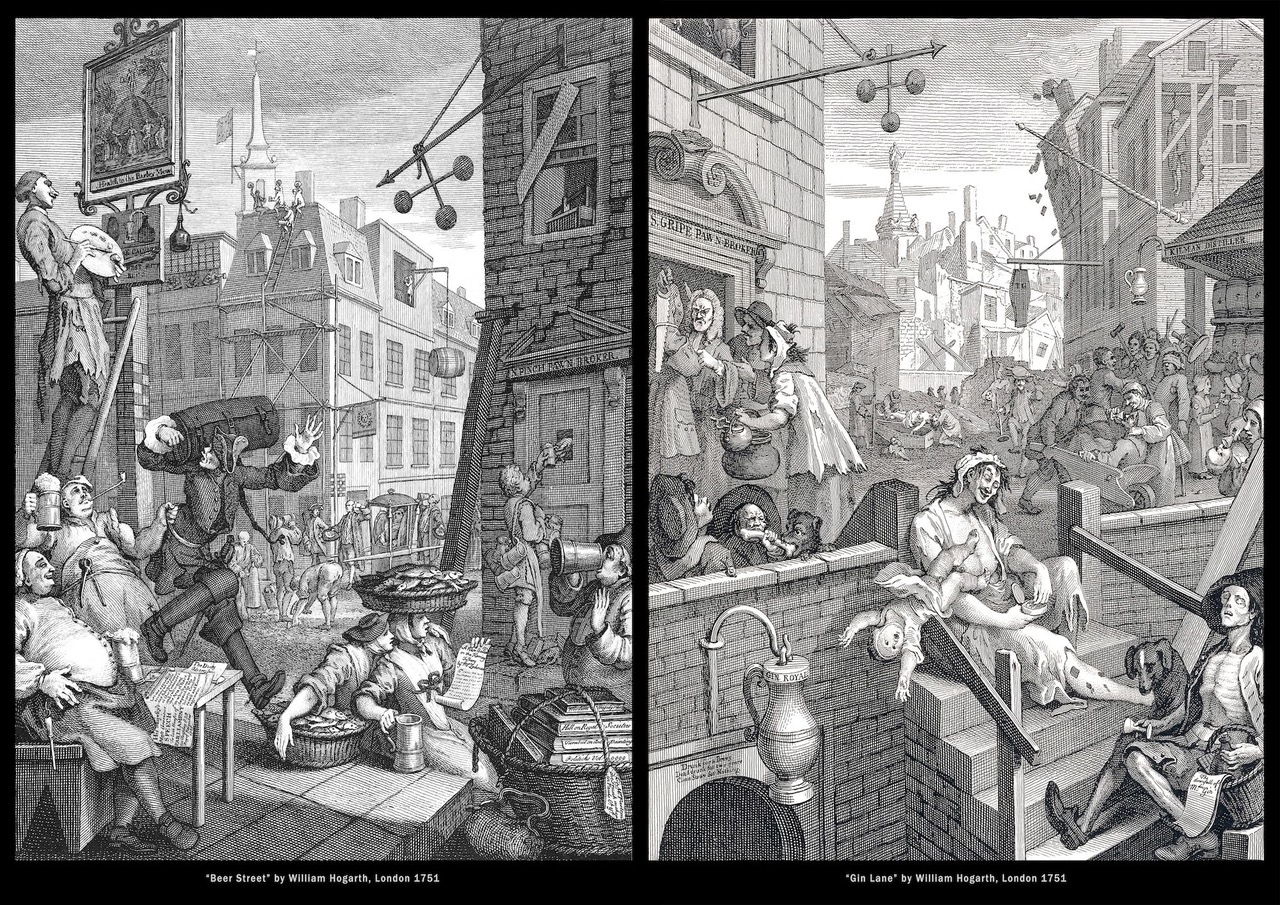
On 10 April 1838 Fr Mathew founded the “Cork Total Abstinence Society”, which in less than nine months enrolled no fewer than 150,000 names. It rapidly spread to Limerick and elsewhere in the country and within a few years it spread internationally, the movement became known as the Total Abstinence Society or the Temperance Society. It was said that in Nenagh 20,000 persons took the pledge in one day. While 100,000 took it in Galway in two days, and 70,000 in Dublin in five days. At its height, in 1844, the movement had some 3 million pledges, or more than half of the adult population”
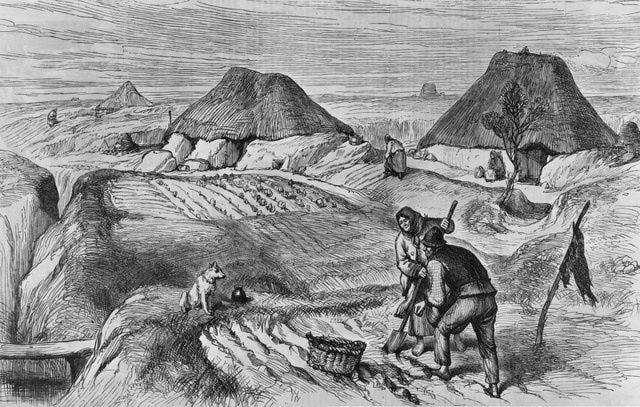
EPISODE 77 SEARCHING FOR A FIELD OF STAWBERRIES, JUNE28, 2020
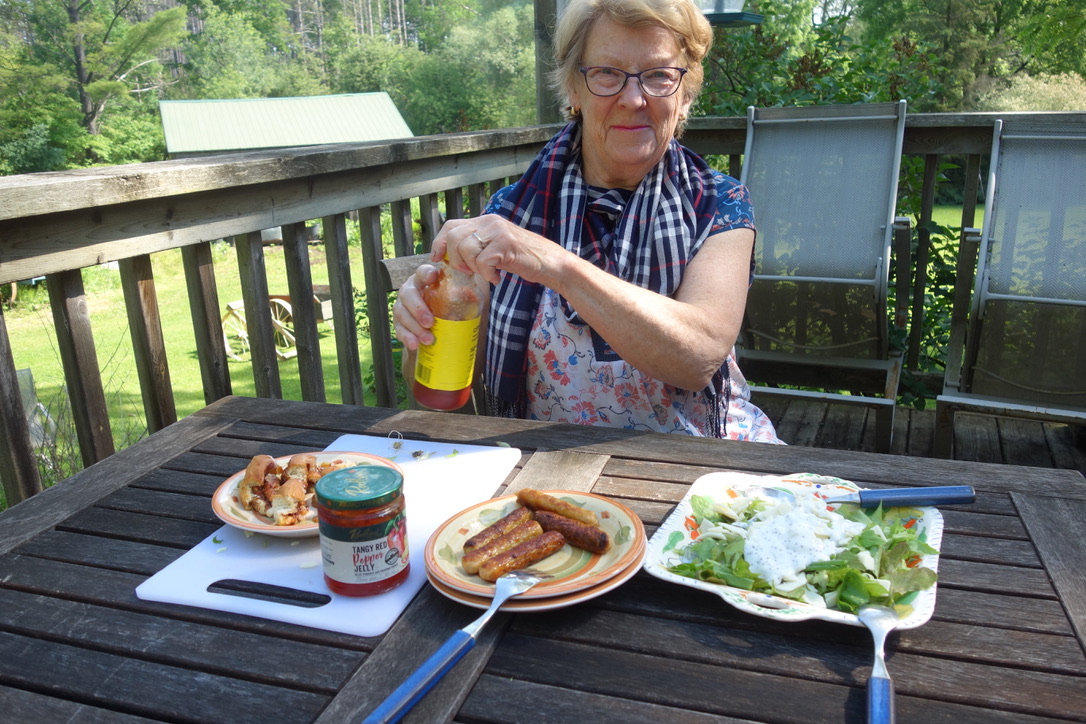
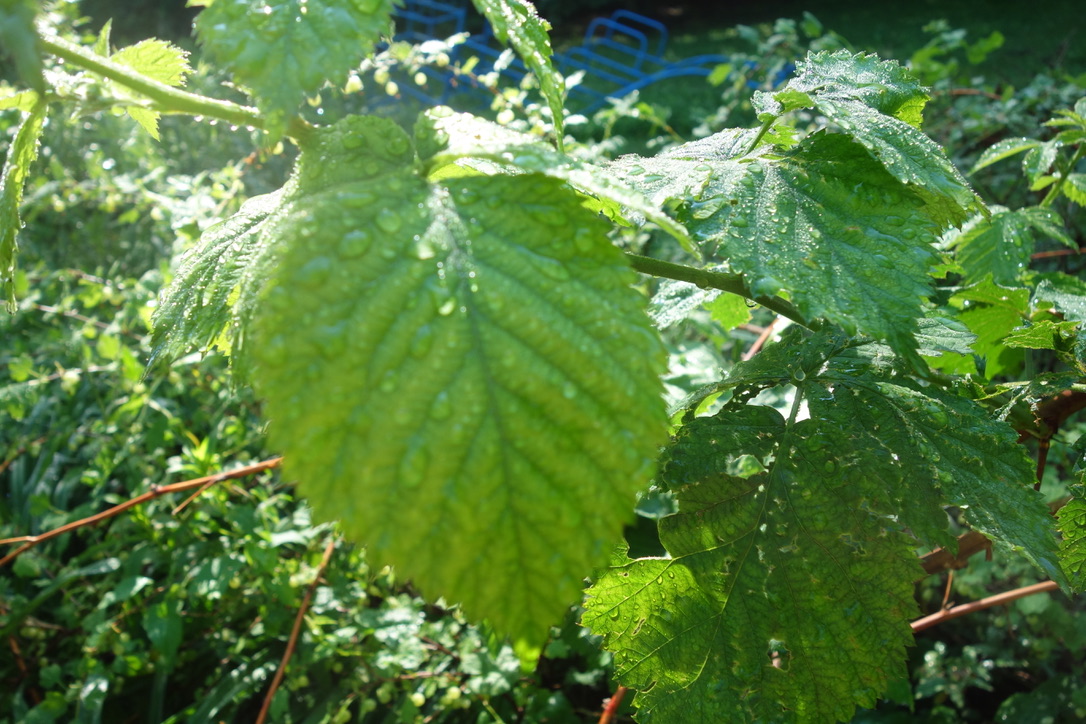
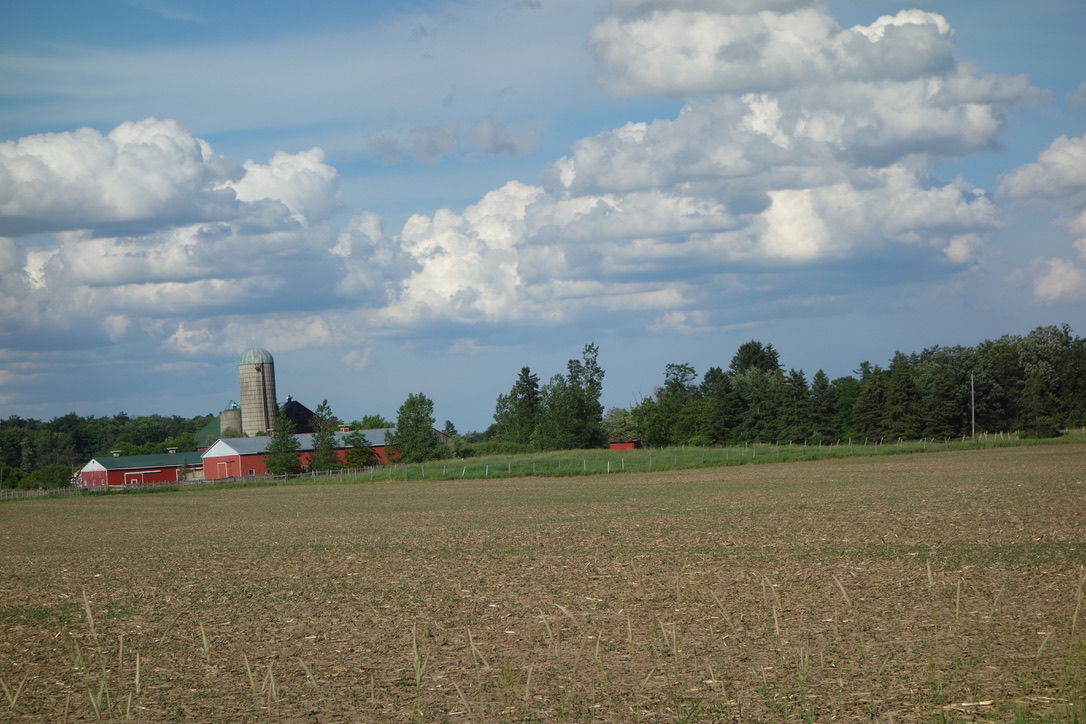
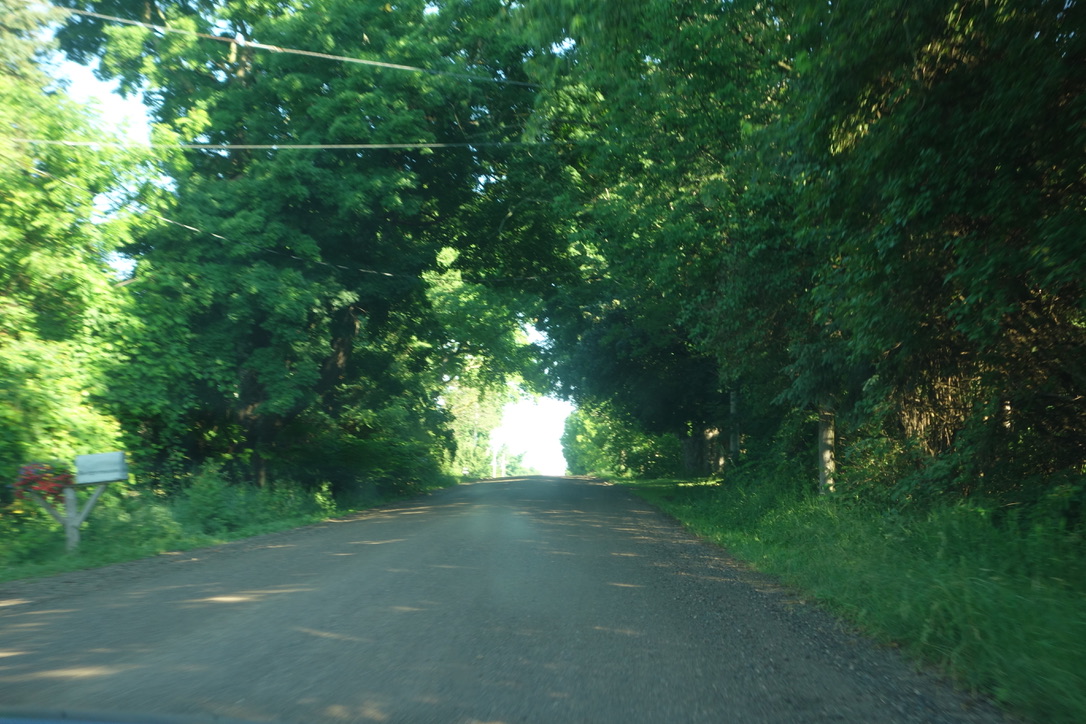
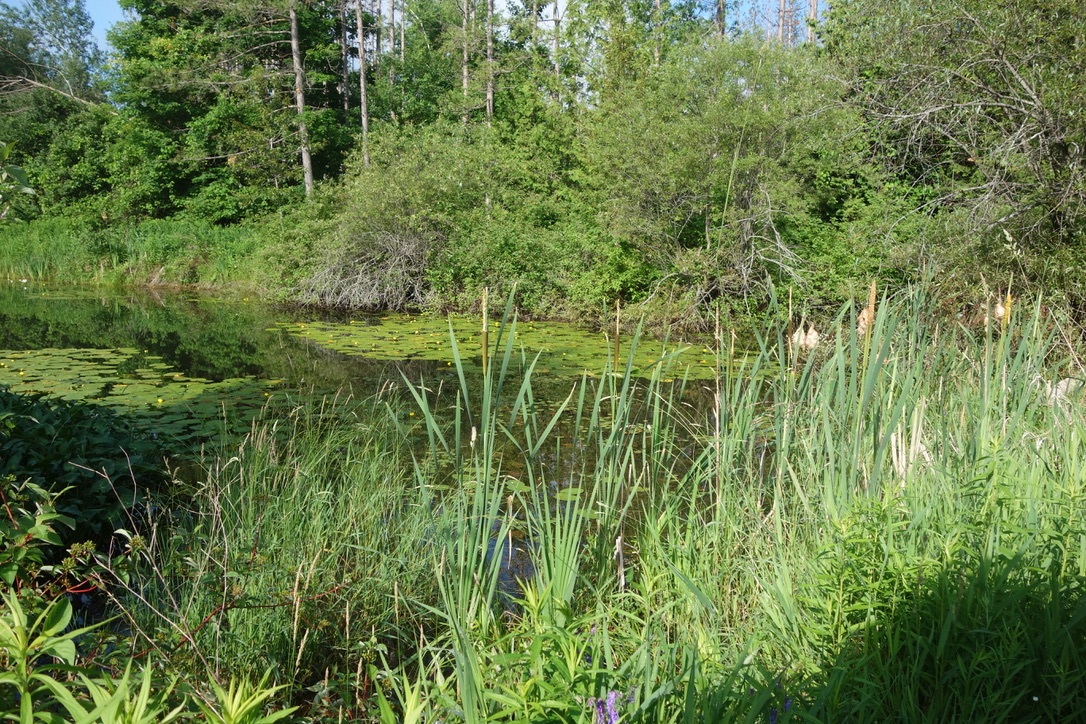


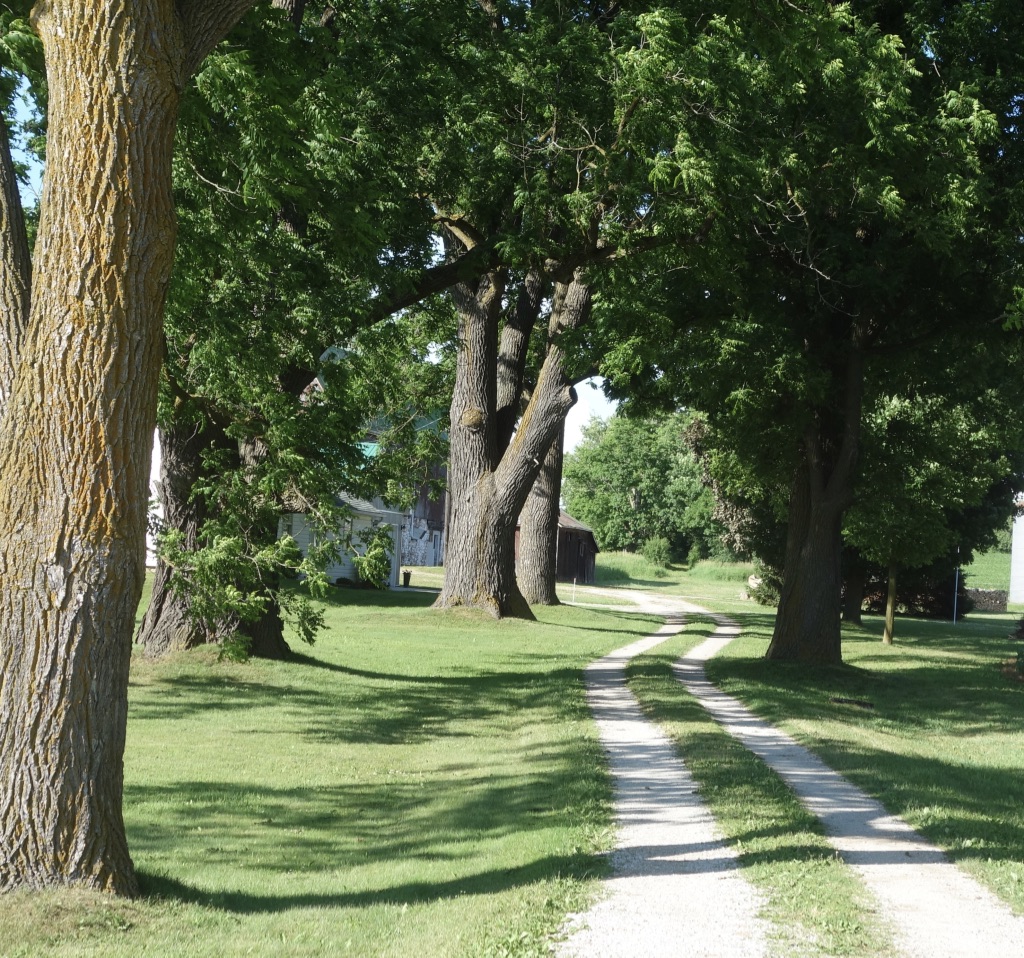
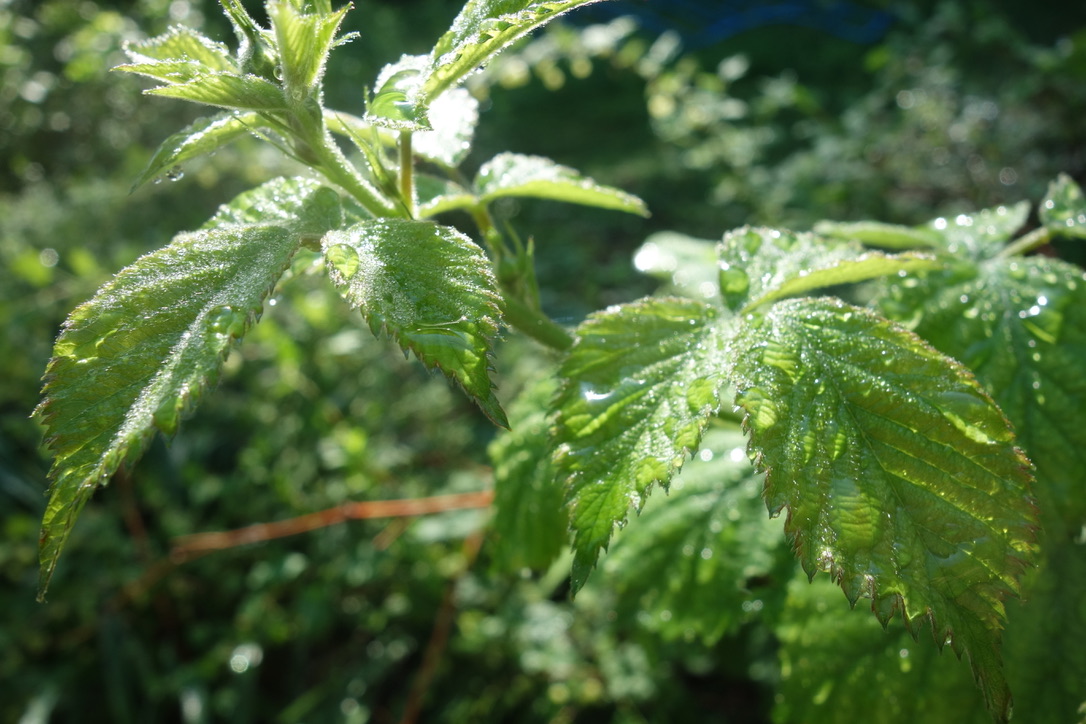
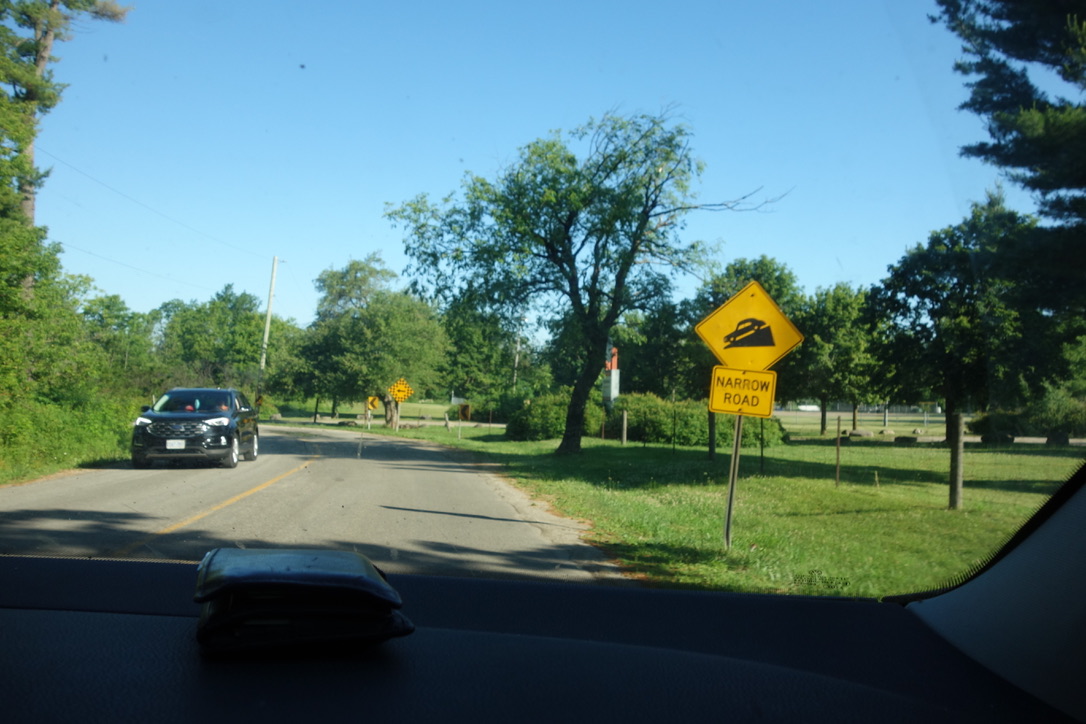

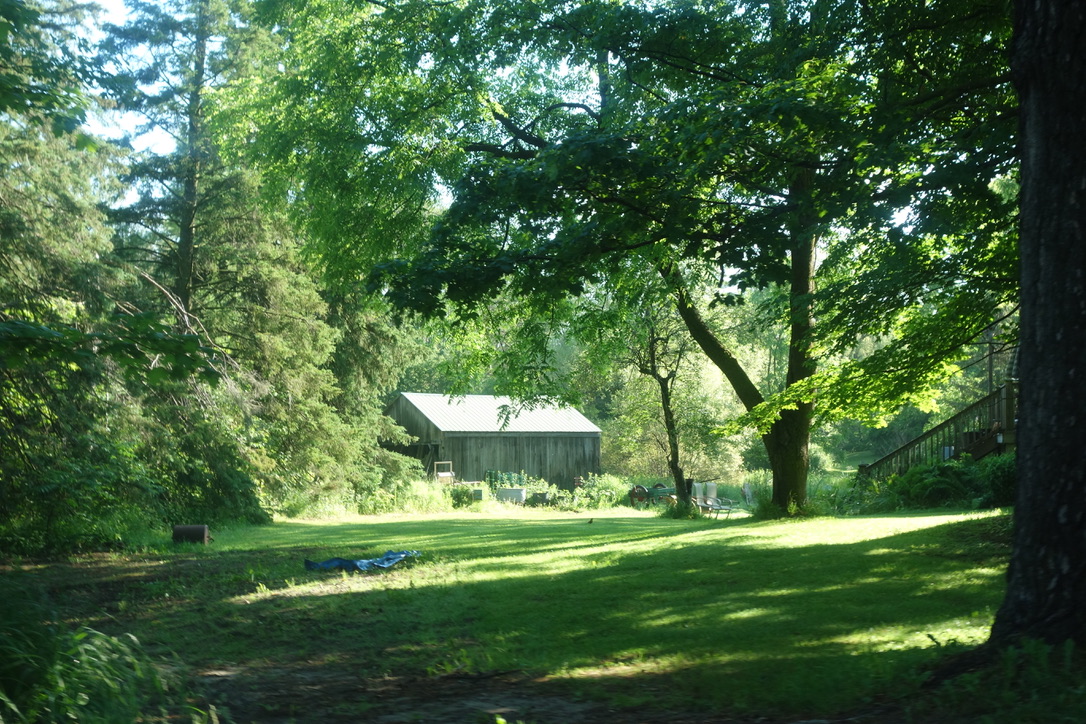

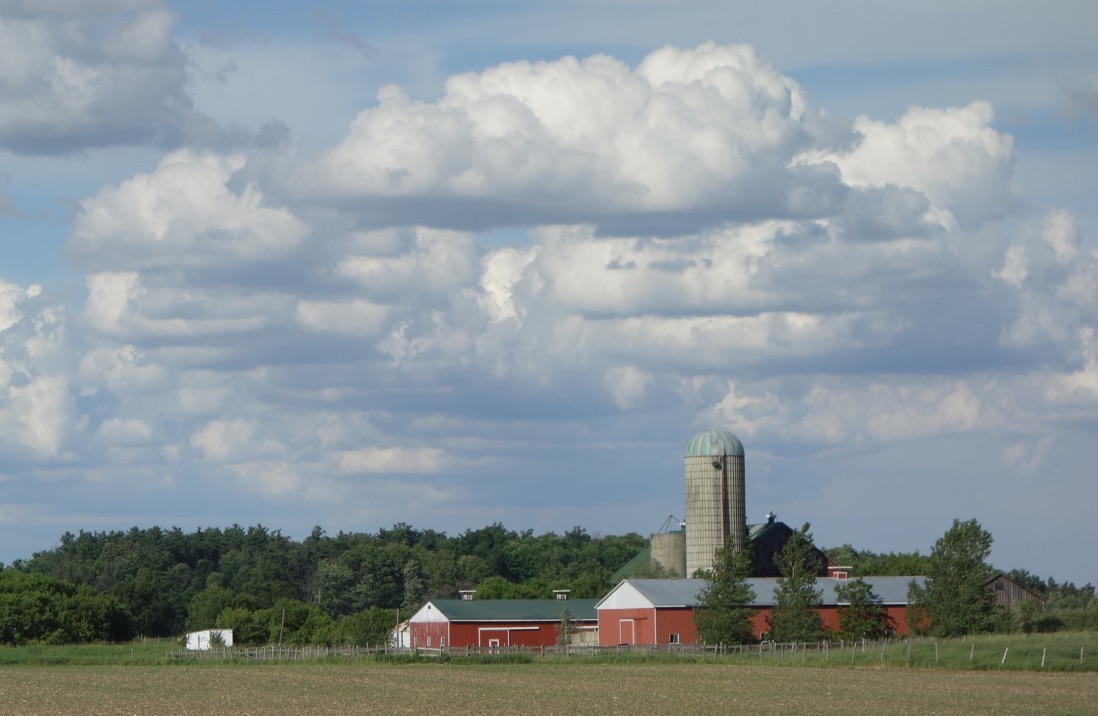

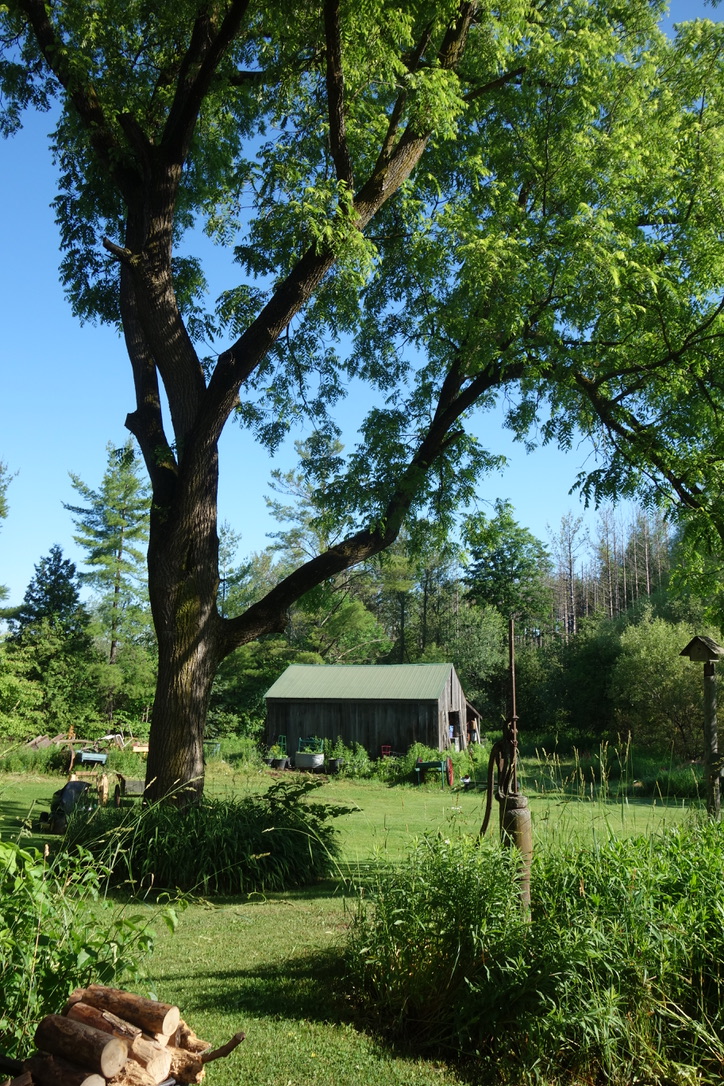
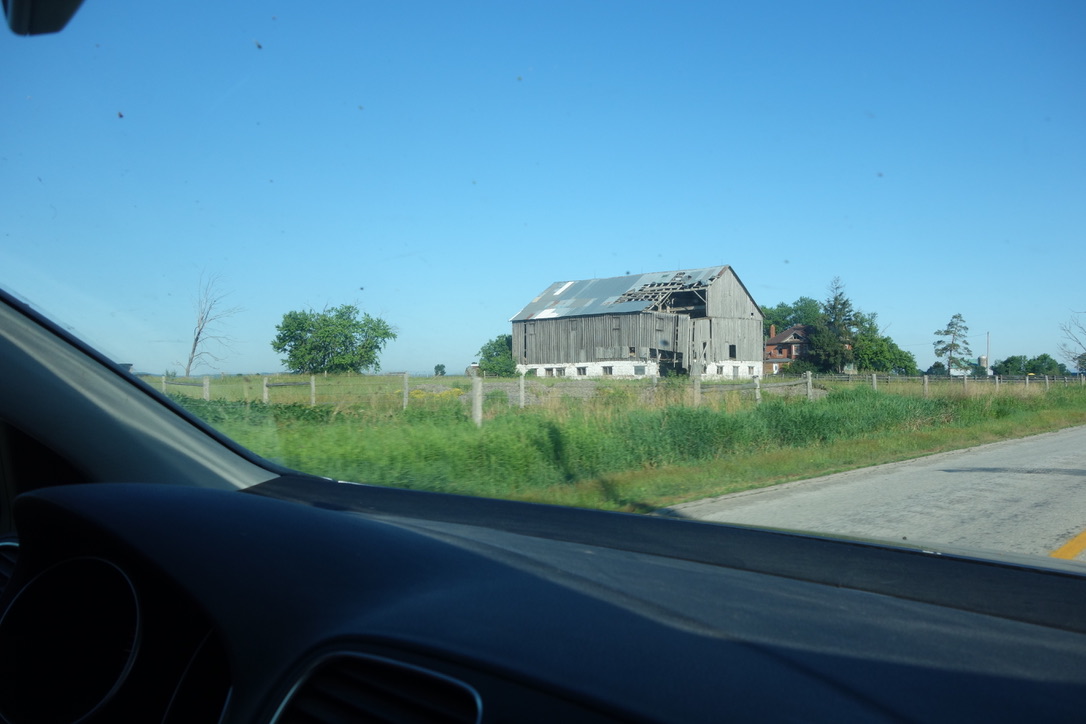
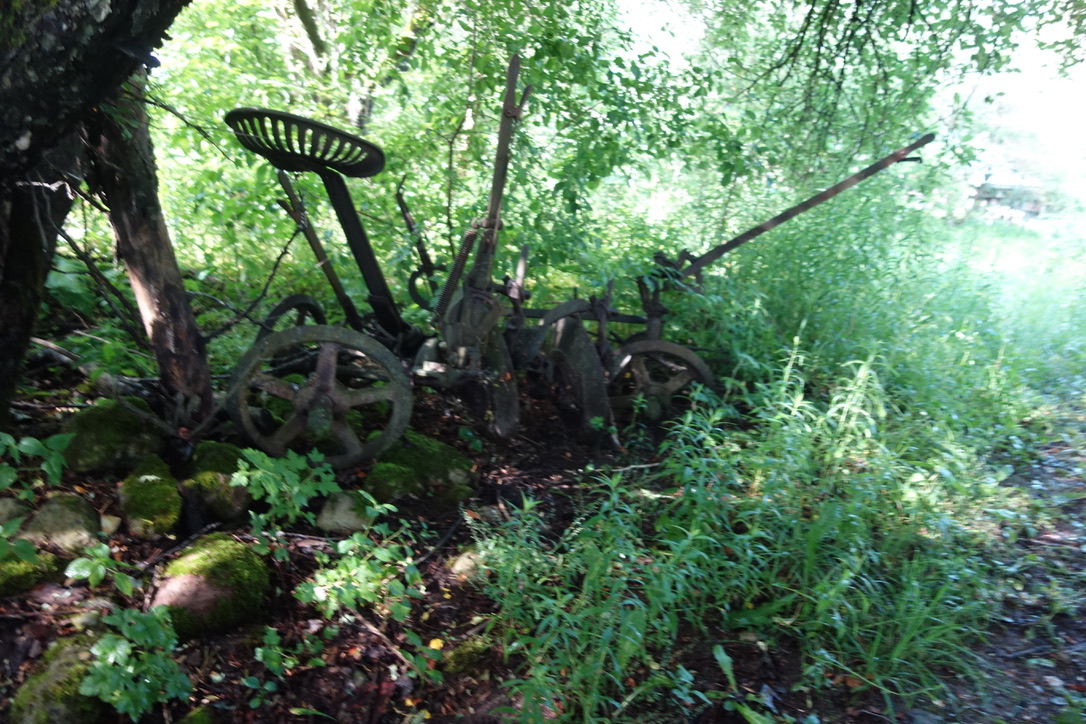
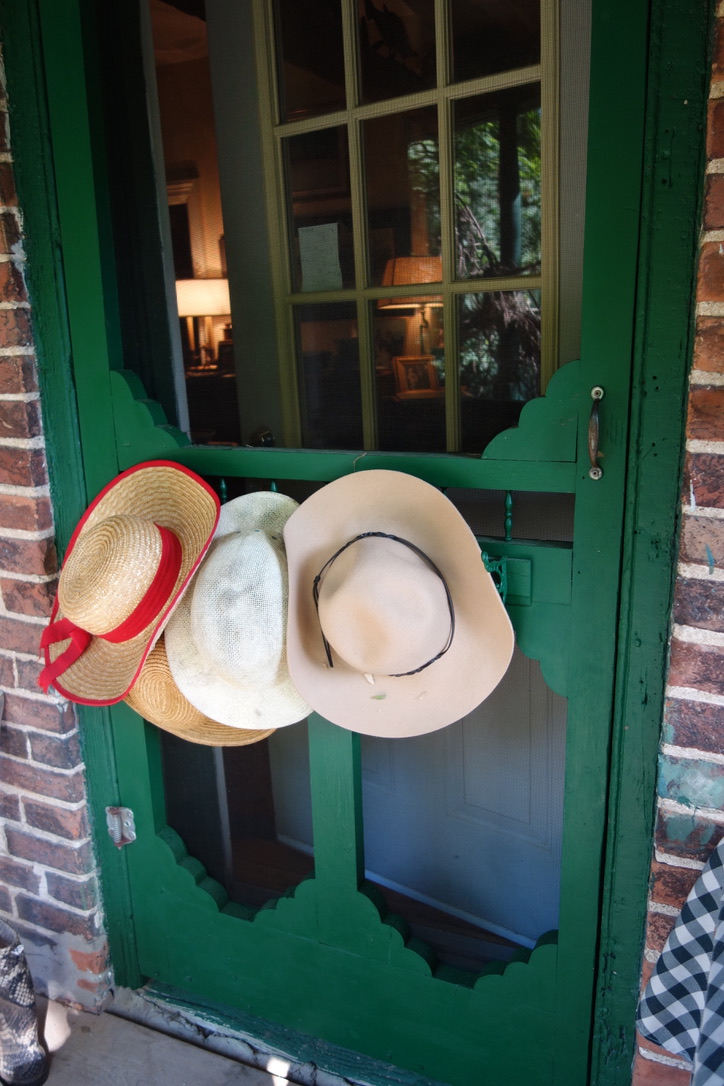
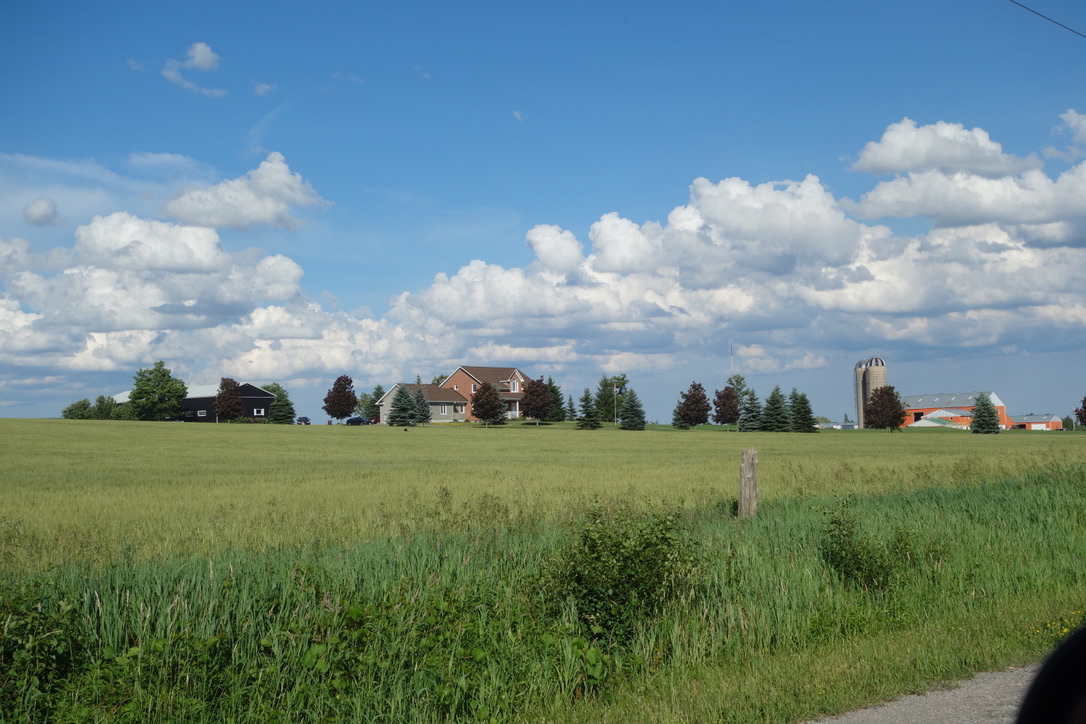


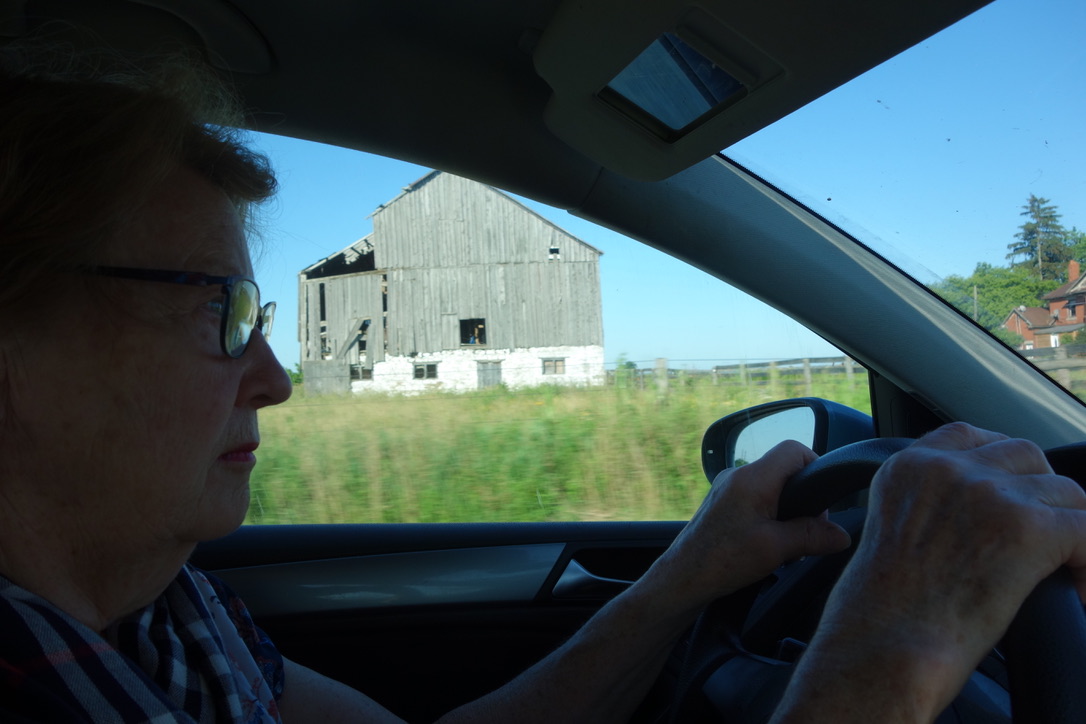

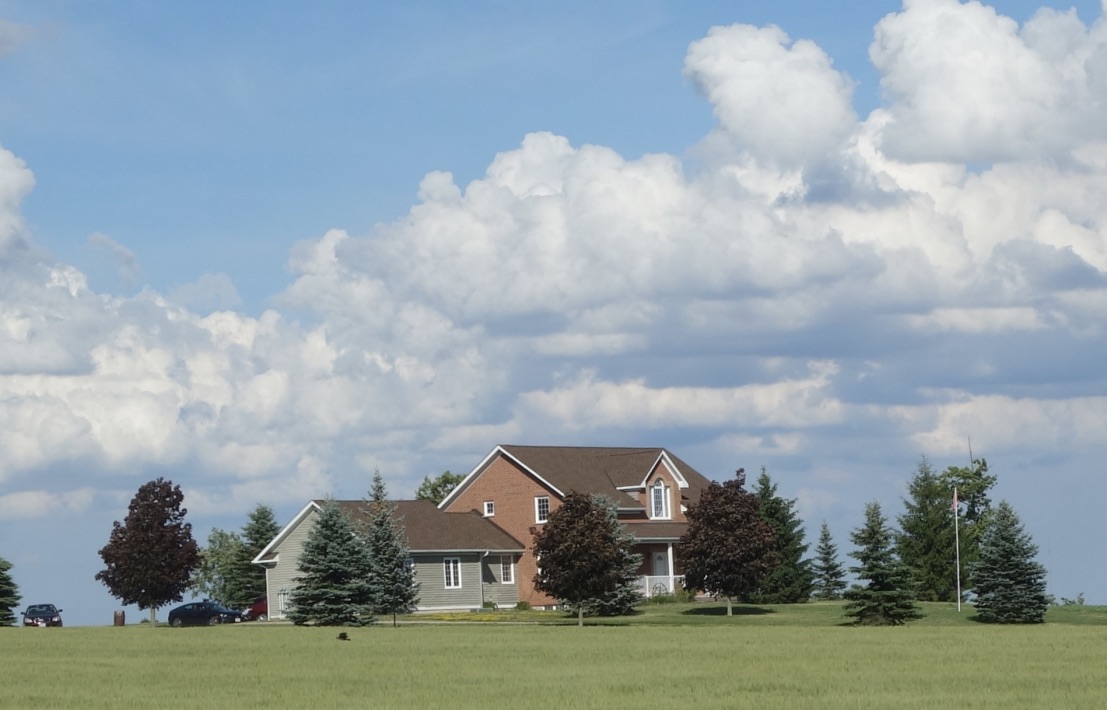
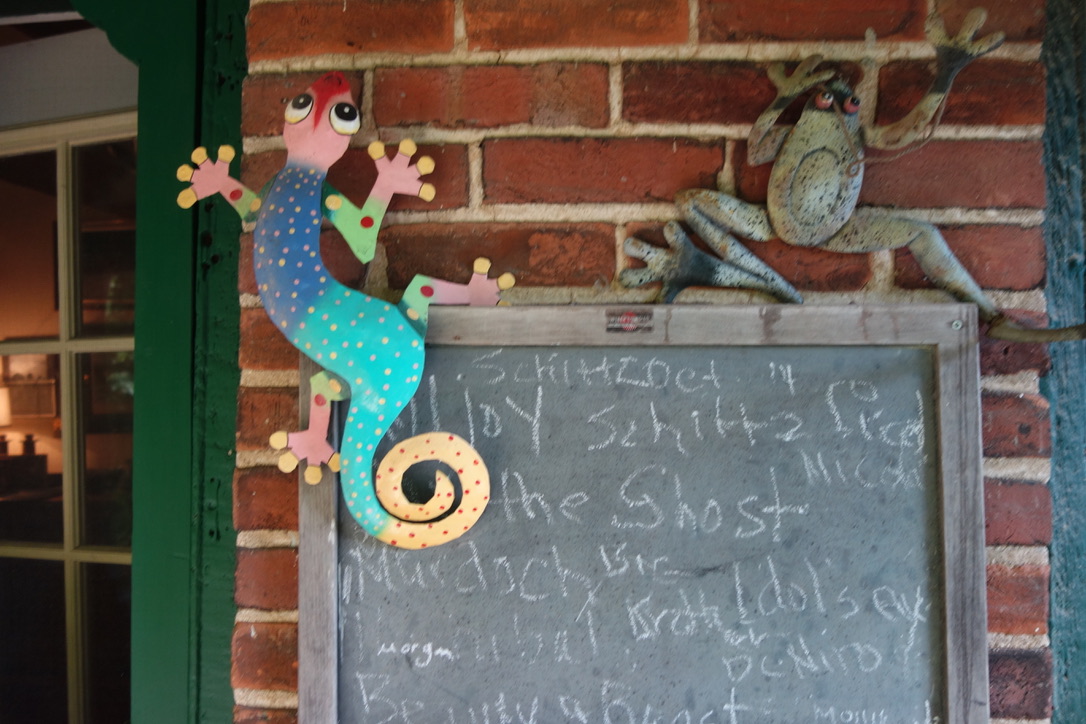

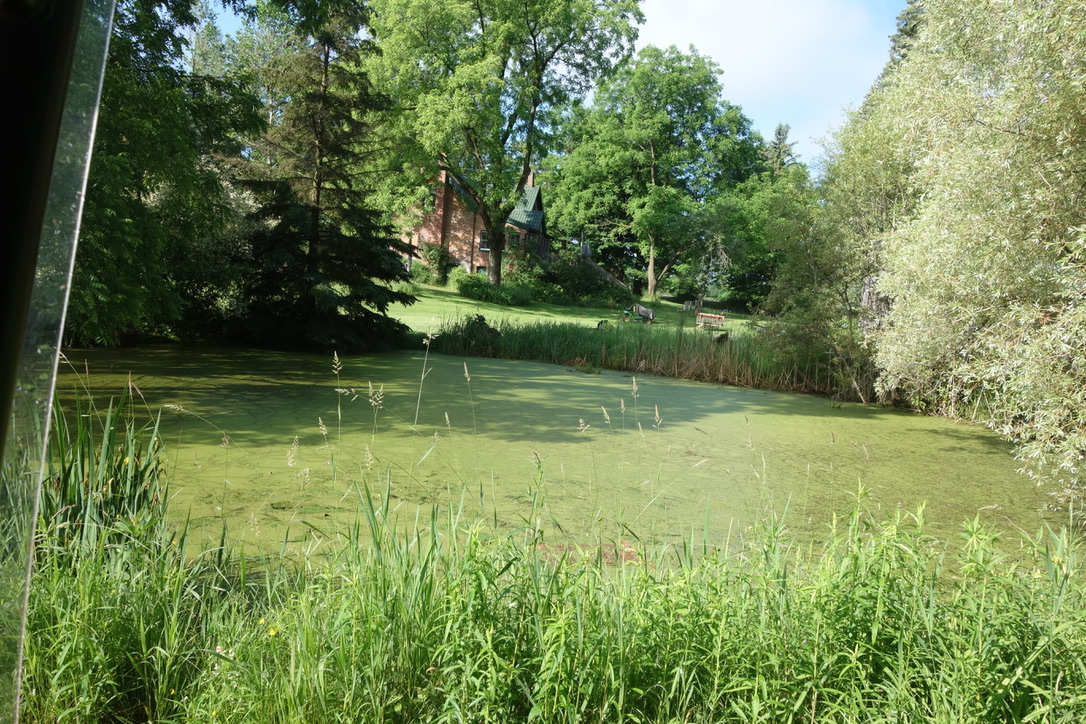



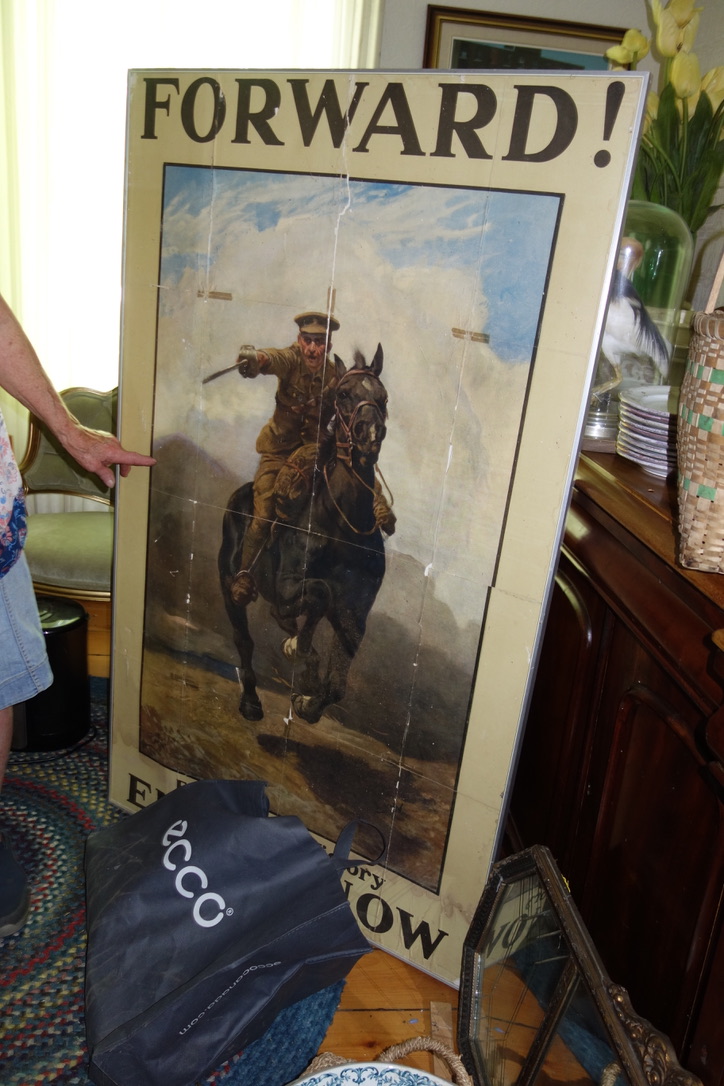
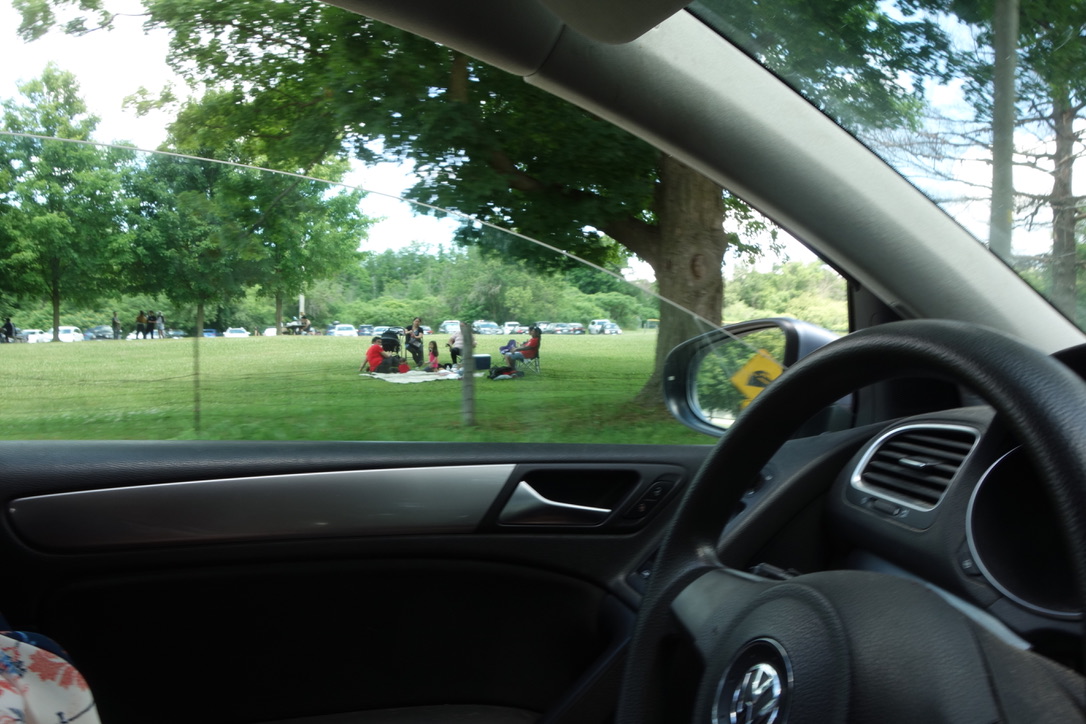
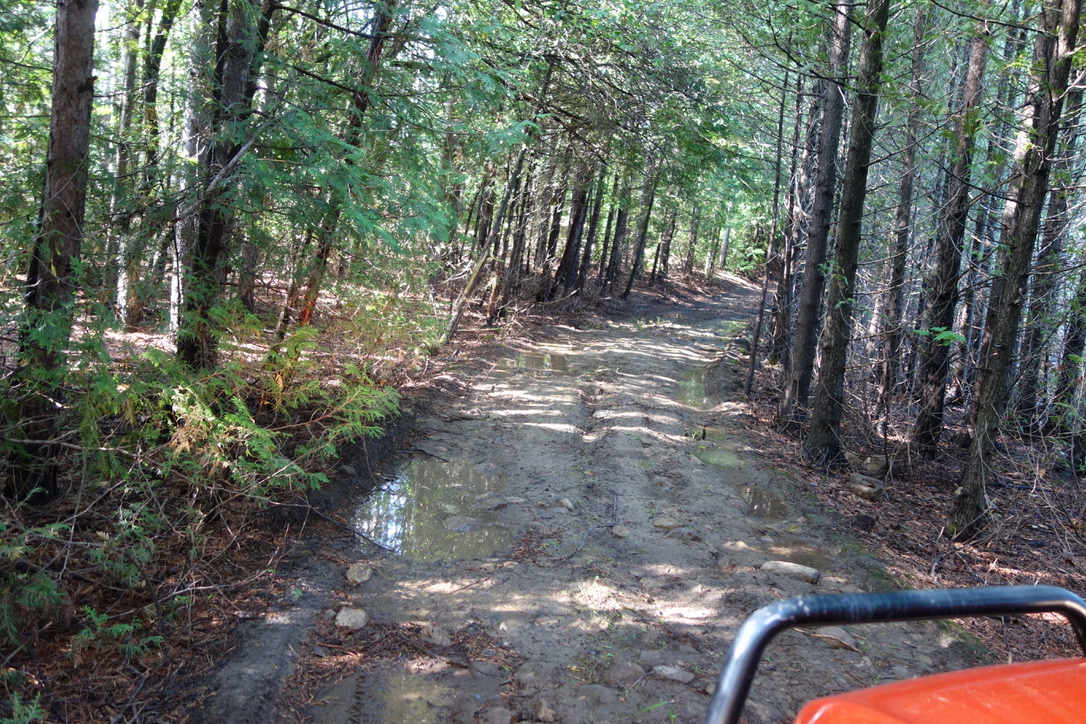
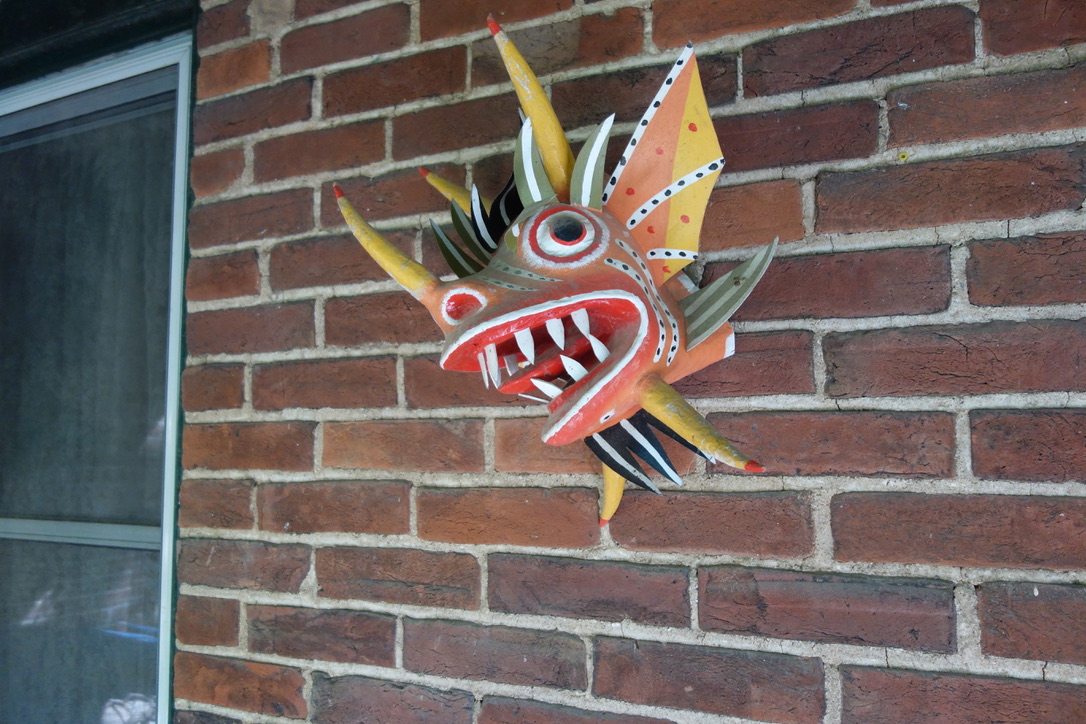
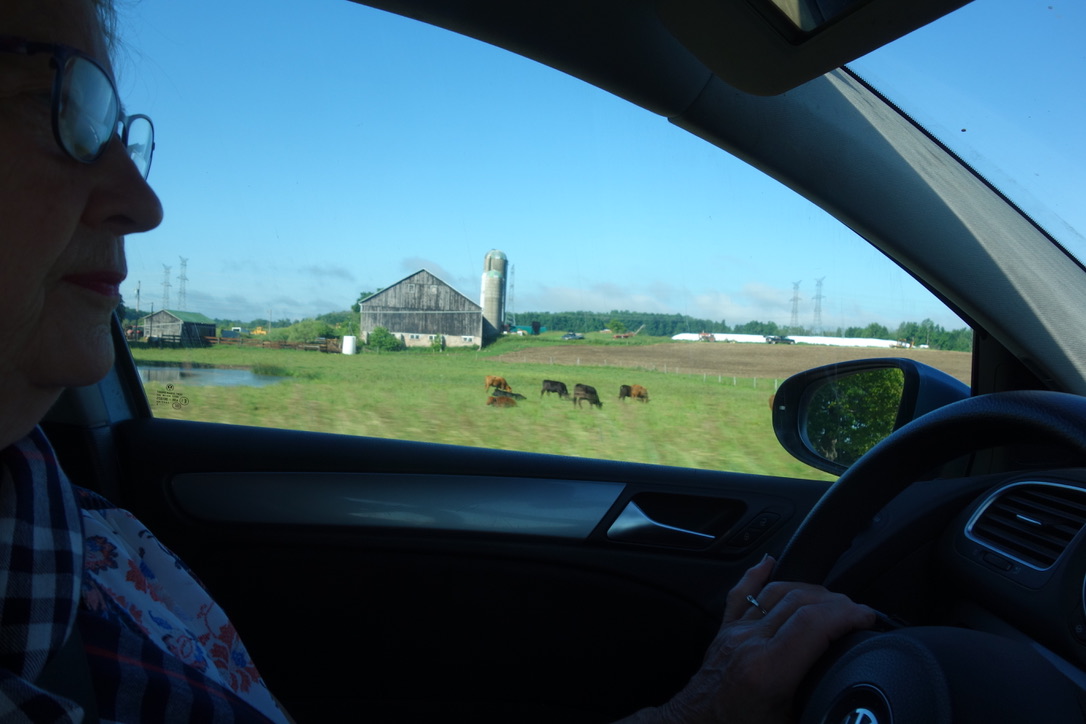

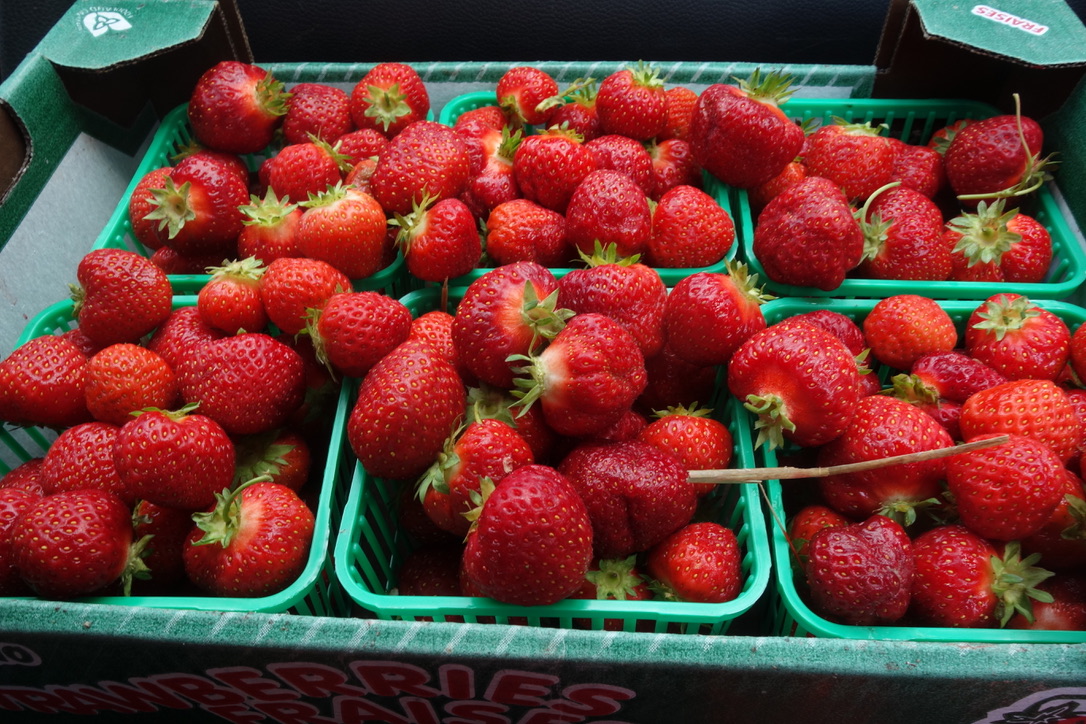

EPISODE 76 LIFE AS AN IRISH COPPER MINER IN BUNMAHON, COUNTY WATERFORD
EPISODE 76 LIFE AS AN IRISH COPPER MINER IN BUNMAHON, COUNTY WATERFORD 1840 TO 1876

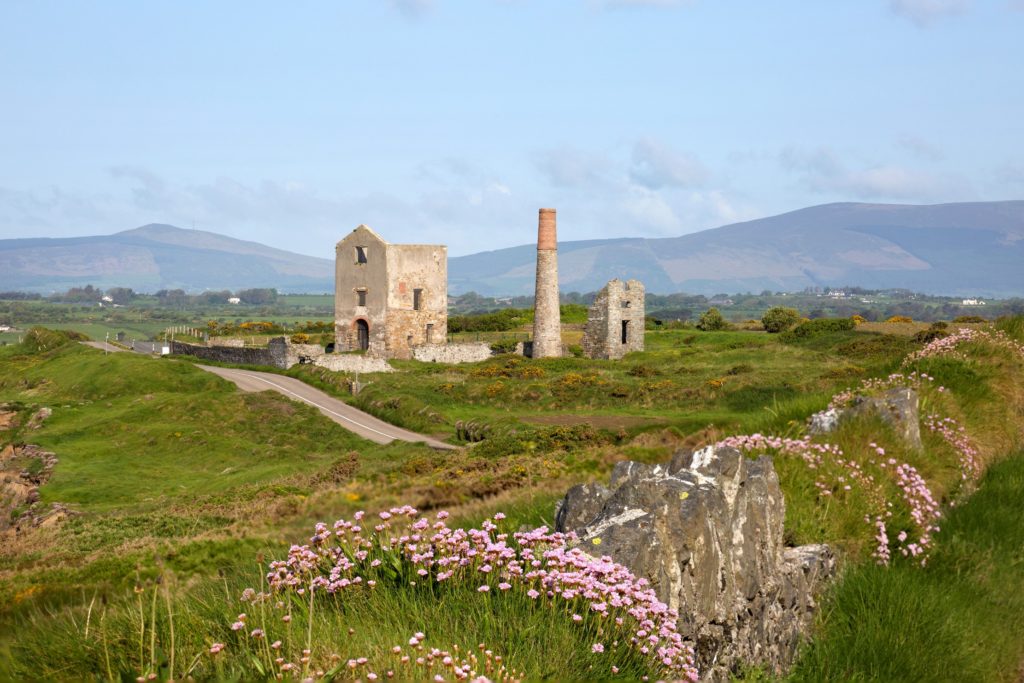

EPISODE 75 Insight into the life of miners… WELSH MINER’S LANTERNS IN ONTARIO BARN
EPISODE 75 WELSH MINERS LANTERNS…FOUND IN AN ONTARIO BARN
WELSH MINERS LANTERNS FOUND IN AN ONTARIO BARNalan skeochoct. 2018 and June 2020
NOTE: I wrote much of this story in 1918 when we made a startling purchase of a pair of miners lanterns at a farm sale. The story gives some
Earlier I related the heart warming story of Jack the Clydesdale whose home in Dr. Richardson’s barn is secure in spite of the auction sale. The new ownerof the farm wanted Jack as much as she wanted the farm.There was another unusual facet of the Richardson auction…which is the subject of this story.TWO WELSH MINERS LAMPS: WHAT WERE THEY DOING IN AN ONTARO BARN IN 2018?ALAN SKEOCHOCT. 2018Seemed out of place. Two heavy copper cylinders sat on a table outside the Richardson Barn at their Sept. 8, 2018 auction sale. Something clicked
in my mind when I noticed them so I took a quick picture and hustled to the other auctioneer who was selling a coyote pelt and a horse trough that looked better thanthose cylinders.“Marjorie, you might throw a bid at those cylinders if the price is right.”“What are they?”“Not sure but those cylinders are out of place…not something found in Ontario barns…wishI could remember what it is about them. Important. But don’t go crazy in your bidding.”“Here they are, Alan, Happy Birthday.”“ Now I remember… These two copper cylinders are…“Jim McCartney, the auctioneer called them ship’s lanterns.”“Well he is wrong. These are miner’s lanterns…designed to give a very little bitof light in the dismal darkness of coal mines in South Wales.”“Why so big and so heavy…allow just a flicker of light.”“The real purpose is to detect dangerous coal gas…explosive. These lanternswere invented after hundreds of British coal miners had died from gas ignitionsunderground. A spark. A candle. A match. Enough to blow a coal mine into amass graveyard.. In the 19th century these underground detonations in coal mineswere regular events.”“What gas are you talking about?“Lots of different gas in coal mines…I suppose the worst was methane trappedin pockets in the coal…ignites easily,”“How did methane get into coal?”“Coal was once ferns, trees, plants of all kinds…most once grew in the Carboniferous Era 359 million of years ago to 299 million years ago inthe Paleozoic period when the earth was really swampy and oceans were hundreds of feetlower because so much water was trapped in arctic and antarctic polar ice. Plants lived anddied, their bodies forming thick blankets of decaying matter. Gas was part of he process of decay.These thick beds of plants eventually got covered with sediment in later eras forming coal whichis a sedimentary rock formed by pressure and the absence of oxygen. Thick beds of coal arefound in pockets all over the world…lots in Canada and the United Staes and Britain and a massiveamount in China.”“Slow down, Alan…do you mean this coal which we can buy in the store is 300 million years old?”“Correct…ancient as time…measured in millions of years…that one chunk of coal.”“So coal is plentiful but not infinite…what happens when we use all the coal?”“Good thinking…dreadful thinking really. It took millions of years to press those ancient plants into coal. Yetwe have only been burning coal for about 300 years…consumption big time. When the coal is gone there will beNo more coal madeunless a catastrophic even happens and our trees and plants are once again covered with sediment and pressed into new coal.”“You scare me at times. Get back to that methane…where does it come from?”“Methane was identified back in 18th century by a scientist who noticed ‘swamp gas”bubbled up and smelled bad. Produced by rotting vegetation. Deep coal mines trapmethane pockets of CH4 (Methane) that is released by miners. Mix methane with oxygenand the chance of explosion occurs.”“Has that ever happened?”“Don’t play around with me…of course coal mine explosions have happened…lots of times.Some truly devastating.”“Name one.”“Universal Colliery, Sengheydd, Wales…massive underground explosion on October 14, 1913, killed 439 minersof the 1,000 underground at the time…and 100 horses…worst mining disaster in British history.Families waiting for announcement of deaths in the Universal Colliery, Wales. Nearlyhalf of the 1,000 coal miners died in the explosion…and 100 horses.“You mean there were 1,000 men digging coal deep in the bowels of Wales and nearly half were killed.”“Right. And that is just one example. Coal miners were killed or maimed every six hours. Miningis a dangerous business.“Did you say there were 200 horses down there as well.“I did. So many stories…where to begin?”“And what about those copper cylinders…how do they fit into the story?”“Good comment…let’s deal with those things. Look at the pictures below.“Your lamps…I see them in those miners hands…same thing”“Designed to sample the air…lamp gets brighter As explosive cas appears…gives miners warning to get the hell out fast.”“What about those horses? Just leave them to get killed?”“Most miners loved their horses…living company for them in the near absolute darkness of the mine stopes and alleyways.”“You said ‘most’ which means some miners were not so kind.”“Correct. Just like any collection of human beings there are always ‘not so nice’ miners who abused the horses.”“How?”“Beat them. There is an amusing story about one miner who abused his horse. The horses bolted and ran through the minetunnels while the miner chased after him. Eventually the horse just disappeared much to the chagrin and anger of the miner.“How could a grown horse disappear in a coal mine?”“That’s what the miner said.”“Was the horse ever found?”“Yes, a while later. The horse had jogged into a side tunnel where a coal cart had been parked. He hid behind the cart whilethe angry miner ran back and forth cursing no doubt.”‘How could a horse hide in a coal mine?”“Easy. You have forgotten that coal mines were pitch dark most places. The horse knew every twist and turn in the mine eventhough he could not see. Amazing. If horses could only laugh and whinny softly, ‘You son of a bitch, you won’t find me here nobattery how you yell and swear.’”“God, must have been awful down there in the darkness.”“No one knows really except for the men deep in the pits.”“Some of those coal seams were not very thick…no room for horses for sure…I saw pictures of men pick axing coal seams whilelying of their sides…maybe only three feet of clearance. Horse no help there.”“That’s where the miners kids proved useful…small people needed.”“Children in coal mines?”“:Sure, some as young as six years old. Some children spent their lives deep those pits. A lot of them died in explosions and roof collapseand accidents…and then there was black lung…dreaded killer when sharp bits of coal dust builds up in the lung. Terrible death.“You exagerate, Alan, little children were not miners.”“Sure as hell were…as a matter of fact children were used in coal mines before horses. The horses, most of them, replaced thechildren when child abuse scandals became general knowledge in the 1840’s in Britain. Children were prohibited in mines.“Saved?”“Not completely. Who would know if a kid was deep in the mine. Absolute darkness except for slivers of light from the lamps.Miners were poorly paid…needed the extra cash from their children. Many payed rent for company houses and had to shop incompany stores…wages barely covered expenses. Mine owners were not always humane…they wanted profits like anycapitalist.Note re: Miner’s lamps/ left: kind of lamp given to foremen and mine execsright: kind of lamp given to miners and children, obvious wear, has numberwich was stated as miners left shift…a way of checking who was still below.In mine collapses and explosions this system gave identity of men still inmine, either dead or alive.CHILDREN, DOWN IN THE COAL MINES“The first coal seams were found on the seacoasts…thin bands of coal…this led to problems.”“Problems?”“yes, the deeper the coal was mined the smaller the tunnel?”“So?”“So , small people were best as miners…and agile people who could easily crawl on hands and knees.”“So?”“So, who are the smallest people?”“Children!”“Right. Children were very useful as miners. They did what they were told. They were small. They were cheap. And they wereexpendable. Who cared what happened deep in the dark of a coal mine?”“Surely , you exaggerate, ““Nope, check the records.”“I do not have time to do that.”“OK, here are some comments by child miners in the 1840’s…part of a British government investigation after a mineaccident that killed children deep in a coal mine.”In the 1840’s the Welsh coal mines were investigated by a British Commission and child labour was reduced as a result. Some of the reports sent by thegovernment authorities were very graphic. “I got my head crushed…by a piece of roof falling.” (William Skidmore, aged 9)…”I got my legs crushed sometme snce, which threw me off work some weeks.” (John Reece, aged 14)…”Nearly a year ago there was an accident and most of us were burned. I wascarried home by a man. it hurt very much because the skin was burnt of my face. I couldn’t work for six months.” (Philip Phillips, aged 9)Philip Davies had a horse for company. He was pale and undernourished in appearance. His clothing was worn and ragged. He could not read:-‘I have been driving horses since I was seven but for one year before that I looked after an air door. I would like to go to school but I am too tired as I work for twelve hours.’ Philip Davies, aged 10, Dinas Colliery, RhonddaDrammers pulled their carts by a chain attached at their waist. They worked in the low tunnels between the coal faces and the higher main roadways where horses might be used. The carts weighed about 1½cwt. of coal and had to be dragged a distance of about 50 yards in a height of about 3 feet.“We are doorkeepers in the four-foot level. We leave the house before six each morning and are in the level until seven o’clock and sometimes later. We get 2p a day and our light costs us 2½p a week. Rachel was in a day school and she can read a little. She was run over by a dram a while ago and was home ill a long time, but she has got over it.”Elizabeth Williams, aged 10 and Mary and Rachel Enoch, 11 and 12 respectively, Dowlais Pits, MerthyrHORSESSome horses were abused, more often though horses were loved and well cared for…but all the horses used in coal mines led a trouble filled life. Mine ceilings collapsed on them, picks and shovels cut them, some miners beat them, horses suffered from black lung like the miners, explosions killed them…In 1876, the RSPCA (Royal Society for the prevention of cruelty to animals) urged protection be provided by law. In that year alone there were 71,396 horses working in British mines, 2,999 of them were killed, 10,878 were injured. ““That’ not a horse, Alan…you said horses worked deep int he cola mines…that’s a pony, small one at that“Pit ponies, often Shetlands, and full draught horses such as Clydesdales worked underground…all sizes. Low ceilings favoured small ponies such as that one above. The animal does not look abused…looks loved by those teen age boys. ““Imagine the terror felt by that horse being lowered deep into the cola mine. Folded into a ball and lowered as much as 1,000 feet in mines that had the besthard anthracite coal. Miners tried to rescue the horses in mine disasters but often could not do much(I wish this picture was larger. Here is a boy, perhaps nine or ten years old, sitting in the darkness beside a ventilation door which he had to open and close as cartloads of coal drawn by horses came by Lonely? Scared?) “Not a tough job, right?”“Not tough, I guess, but would you want to sit all alone in the darkness for twelve hours opening and closing the curtain when a horse camp by with a cartload of coal. Lonely, perhaps frightened, perhaps proud to be part of this strange world of adults.” The passageways were not lit. Pit horses soon got to know their way through the mind passage in the absolute darkness. Horses even knew when an eight hour shift was over and then made their way to the underground stables for their supper.“Lots of girls were sent underground in the early years. Working class kids. Pulling cartloads of coal from the coal face where men hacked at the coal or set small explosive charges in hand drilled holes. Some girls pulled big boxes of coal using carts that had no wheels. The use of girls in the mines ended before the use of boys ended. Law eventually prohibited children. ““MAny mine owners cheat and use children despite the law.”“Sad to say…many kids still worked underground. Hard for mine owners to resist the attraction of cheap labour…payed children a couple of pence a day…two cents a day. Of course a cent had a lot higher value then. But the pay was never enough for a working man and his children to ever treat the poverty cycle. As the song Sixteen Tons said they ‘owed their soul to the company store’.12 year old John Davies comes up from Rhonda mine carrying his miner’s lantern, lunch bag and jug of water.PERSONAL CONNECTON: FRANK FREEMAN, YOUNGEST BROTHER OF MY GRANDFATHER EDWARD FREEMANMore than a century later, in 1960, I had an opportunity to visit the Welsh coal fields near Aberdare. I had read ‘How Green Was My Valley’* so had someidea of the difficult life coal miners faced n the past. Only in 1960, however, did I become aware that my great uncle Frank Freeman lived there in aplace called Ysgeborwen. He was a butcher and our meeting was brief, perhaps an hour, but the ambience of that coal valley cannot be forgotten. Some of thecoal ‘pits’ were still operating and I distinctly remember miners coming off shift singing. Singing! Really singing. And I also rememberbeing given a brokeN clay pipe that had been excavated when an old 1840 era coal seam was being converted to an open pit mine. “The old cartswere still down there…scooped them up…that’s where this pipe stem came from. Odd. Pipes and matches were dangerous things tohave in an underground coal mine.”*How Green Was My Valley” made the Welsh coal fields famous. Even became motion picture. The book was thought tobe an accurate history of the brutality of coal mining. years later the book was determined to be fiction. Based on overheardconversations of Welsh families living in London.ALAN SKEOCHOCT. 2018
WHAT IS COAL…WHRE DOES COAL ORIGINATE?
“Did you ever wonder where coal came from?”“Plants … millions of plants I think…sort of hard to believe.”“Really hard to believe…“But true…millions of dead plants over millions of years…plants, mostly giant ferns, from the CarboniferousEra when the earth was warmer and the atmosphere had lots of carbon dioxide….plants love CO2. By chancethick beds of dead plants got trapped under water that was eventually covered with thick bands of mud. Piles of mudwhich became slate and other sedimentary stone…heavy…the heavier the overburden the more those bands ofplants were pressed…pressure so great that the plants became beds of coal. Anthracite coal was the bestkind of hard coal…also buried the deepest …anthracite coal mines are often more than 1,000 feet below the surface.SONGS THEY SANGAhhh. I’m so tired. How long can this go on?
Said if you see me comin’ better step aside
A lot of men didn’t and a lot of men died
I got one fist of iron, and the other of steel
If the right one don’t a get ya then the left one will
I was born one morning when the sun didn’t shine
Picked up my shovel and walked to the line
I hauled 16 tons of number 9 coal
And the straw boss said “Well bless my soul.”
(Melody 2)
Sixteen tons what do you get?
Another day older and deeper in debt.
Saint Peter don’t you call me cuz I can’t go.
I owe my soul to the company store.Nobody knows the trouble I’ve seen.
Nobody knows my sorrow.
WDark As A Dungeon, song lyrics
Song: Dark As A Dungeon
Lyrics: Merle Travis(1)
Music: Merle Travis
Year: 1946
Genre:
Country: USA
Come all you young fellers, so young and so fine,
And seek not your fortune in the dark, dreary mine.
It will form as a habit and seep in your soul,
‘Til the blood of your veins runs black as the coal.
This song was originally posted on protestsonglyrics.net
(CHORUS:)
Where it’s dark as a dungeon and damp as the dew,
Where the dangers are many and the pleasures are few,
Where the rain never falls and the sun never shines,
It’s dark as a dungeon way down in the mines.It’s many a man I have seen in my day,
Who lived just to labor his whole life away.
Like a fiend with his dope or a drunkard his wine,
A man must have lust for the lure of the mine.(CHORUS)
I hope when I’m gone and the ages do roll,
My body will blacken and form into coal.
Then I’ll look down from the door of my Heavenly home,
And pity the miner a diggin’ my bones.
This song was originally posted on protestsonglyrics.net
(CHORUS)The midnight, the morning, the breaking of the day,
Are the same to the miner who labors away.
Where the demons of death often come by surprise,
One slip of the slate and you’re buried alive.
A Welsh miner and pit pony partner. Photo courtesy Big Pit National Coal Museum, Blaenafon, Wa
